Redeemed Check


Marked Insufficient Funds
Tar Heels In the Valley of Humility PLUS: Adopt-an-Artifact Program, Rootle Roadster Tour Makes Stop at Museum of the Albemarle!, AND What’s Happening at Affiliate Museums
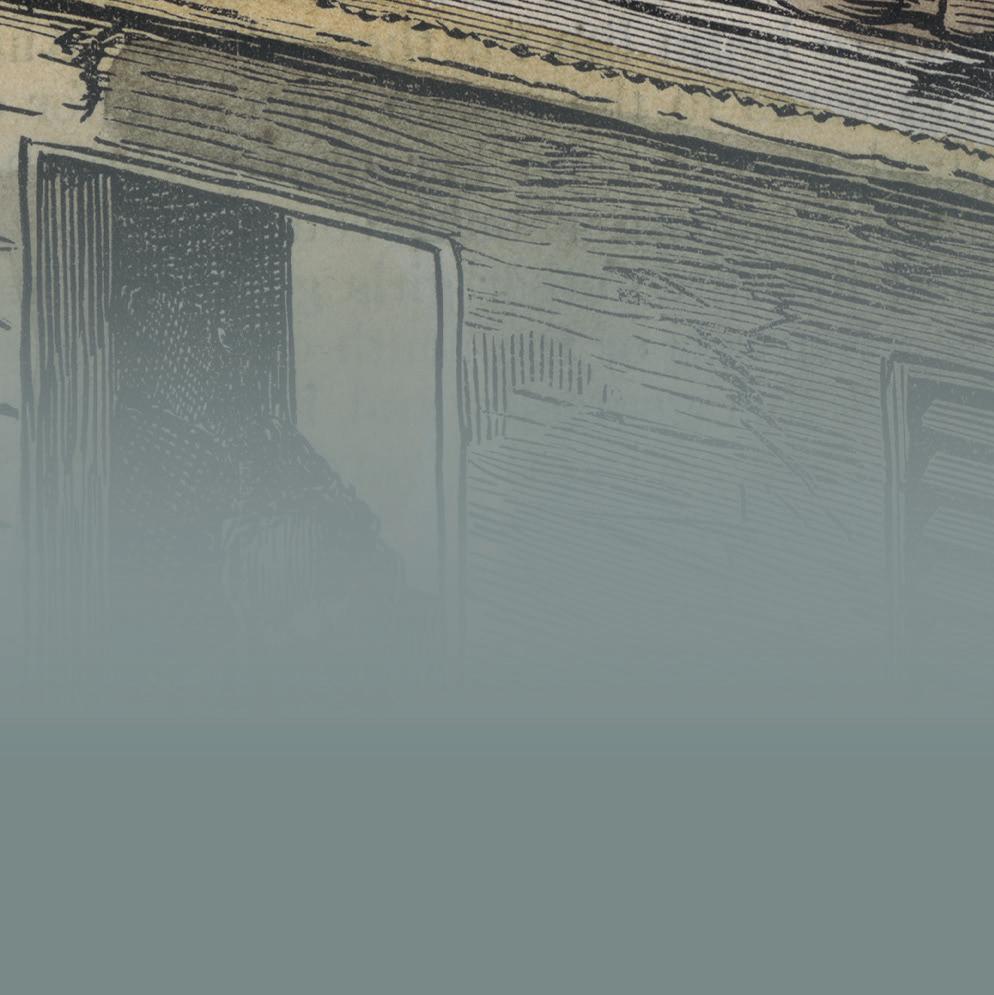




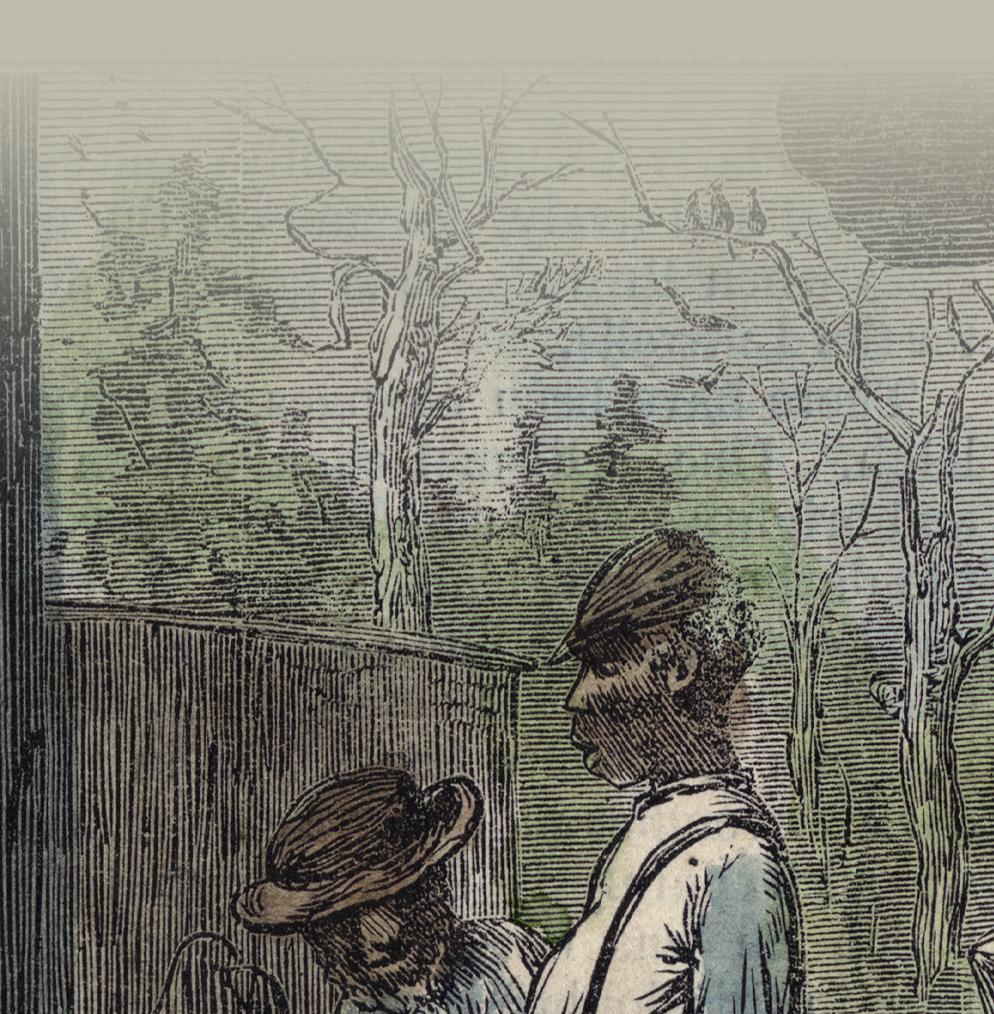
Freedom in the Harshest of Places
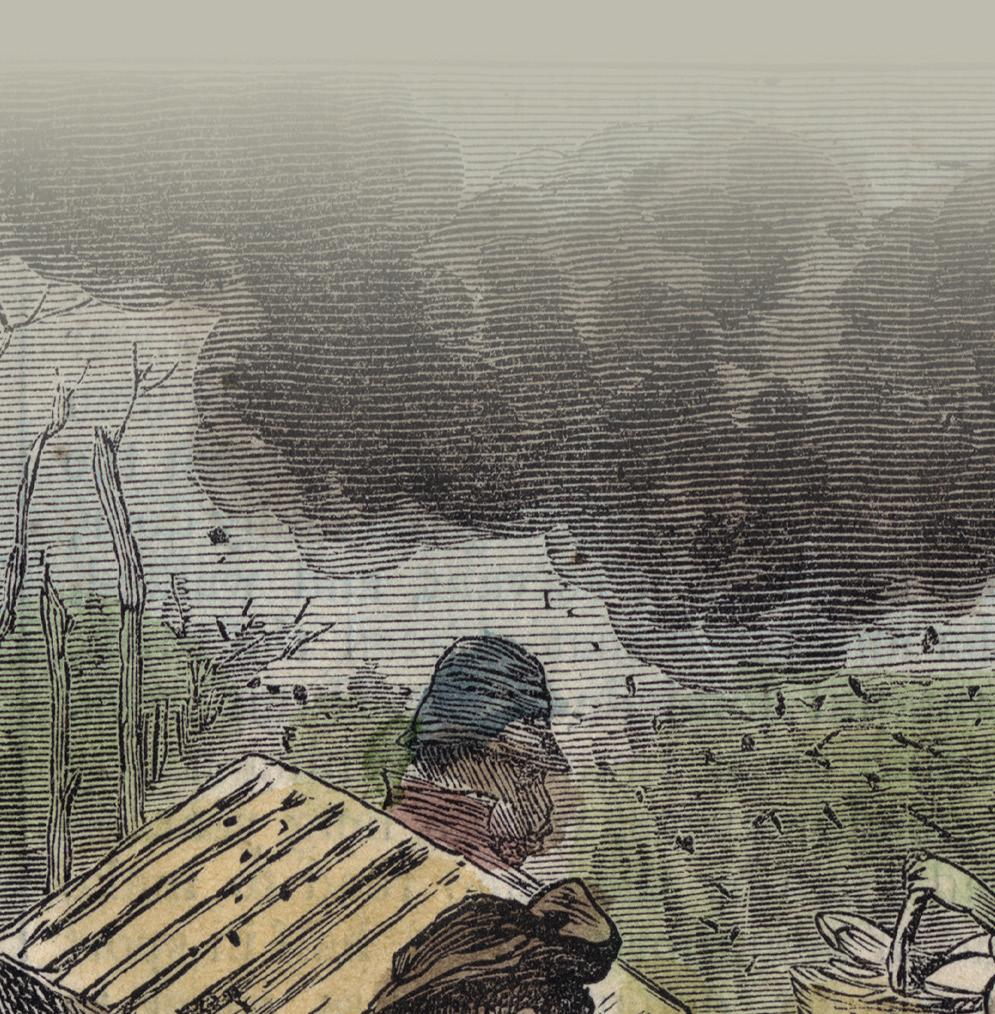
Spring/Summer 2023 | Vol. 46 Experience • Explore • Engage A PUBLICATION OF THE FRIENDS OF THE
Experience • Explore • Engage
State of North Carolina
Roy A. Cooper, Governor
Mark Robinson, Lieutenant Governor
Department of Natural and Cultural Resources
Reid Wilson, Secretary
Office of Archives and History
Darin Waters, Deputy Secretary
Division of State History Museums
North Carolina Museum of History
Kenneth B. Howard, Director
The Museum of the Albemarle is a part of the Division of State History Museums.
Friends of the Museum of the Albemarle Board Of Directors
Johny Hallow, President
Kim Baumbaugh, Vice President Douglas Gardner, Treasurer
Penny Leary-Smith, Secretary
Josh Bass, Chris Barber, Kim Baumbaugh, Bernetta Brown, Joyce Buffaloe, Ella Fields Bunch,
Kim Castle, David Clegg, Melinda Del Gabino, David Harris, Linda Hofler, Tess Judge, Geraldine Langford, Freda Nelson, Jude Roberts,
Steven Rudey, Dr. Melissa Stuckey, George Thomas, Katherine Wassink
Don Pendergraft, Ex-Officio
Barbara Putnam, Ex-Officio
Museum of the Albemarle Staff
Don Pendergraft, Director of Regional Museums
Barbara Putnam, Operations Manager
Wayne Mathews, Facilities Manager
Wanda Lassiter, Curator
Lori Meads, Education Curator
Carrie Barker, Collections Specialist
Marjorie Berry, Public Information Specialist
Kelly Boyd, Security/Event Rental Assistant
Kathy Bowman, Public Information Specialist
Rosana Castilho, Event Rental Coordinator
Martine DeLizza, Public Information Specialist
Noah Edwards, Artifact Collections Assistant
Bobby Elliott, Security/Event Rental Assistant
Matt Ferrell, Carpenter
Noah Janis, Museum Educator
Andrew Nelson-Redondo, Exhibit/Graphic Designer
Lynette Sawyer, Museum Specialist/AV Technician
William Seymore, Facilities Maintenance
Rebecca Stiles, Administrative Assistant
Mary Temple, Museum Gift Shop
Paul Vincent, Facilities Maintenance
Renee Wood, Public Information Specialist
In the Exhibitions
Our Story: Life in the Albemarle
The Albemarle represents a unique place—half land, half water. The story of this place comes alive in Our Story, a tale of how our communities have adapted to the challenges and opportunities of our unusual home.
Our Story: Audio Tour
Virtual tour provides in-depth overview of the region and its progression through various eras of transportation. Now available in English and Spanish.
North Carolina Shad Boat
The official State Historical Boat of North Carolina was first built in the early 1880s by George Washington Creef of Roanoke Island. The shad boat on display here at MOA was constructed in 1904 by renowned boat builder and decoy carver Alvirah Wright.
Working Birds: Decoys and Their Carvers Lobby exhibit showcasing decoys from the museum’s collection.
Albemarle Profile: Staff Sergeant Dorothy Bellamy (opens May 11, 2023)
Small case display focusing on the military career of Perquimans County resident Dorothy Bellamy.
Century Farms of Northeastern North Carolina Multimedia display of photographs of centennial and bicentennial farms of northeastern North Carolina.
Freedom! A Promise Disrupted: North Carolina, 1862-1901
This traveling exhibit, on loan from the North Carolina Museum of History, depicts the struggle that newly freed African Americans faced to maintain their freedom in the post-Civil War and Reconstruction Era of North Carolina.
Guardians of the Land:
Discovering Indigenous Americans
A children’s exhibit that focuses on the regional tribes of northeastern North Carolina.
High on the Hog
(closes June 3, 2023)
Hogs have found their way into our lives and culture, playing a significant role for families in northeastern North Carolina. This exhibit looks at how pigs have become a part of our family, home, and livelihood.
Nell Cropsey: 120 Years of Mystery
(Reopens April 13, 2023; closes May 6, 2023)
Revisit this lobby display highlighting the death and disappearance of nineteen-year-old Elizabeth City resident Nell Cropsey.
Pollination Investigation
Poster display from the Smithsonian Institution Traveling Exhibition Service that explores the who, what, when, where, why, and how of pollination by interpreting the unique relationship between pollinators and flowers.
Reliving the 1970s: Toy Edition
(Closes May 1, 2023)
This small case display highlights toys produced in the 1970s.
Rock of the Eye: Boatbuilding Traditions
FRONT COVER:
TIMBER CUTTERS GOING INTO THE SWAM, 1873 Courtesy Harper’s Weekly
Around the Albemarle Sound Exhibition highlighting boatbuilding traditions and the crafters who helped shape the Albemarle region. IT’S
1. Open camera or QR code reader on your phone
2. Point your camera at the QR code
3. Tap “Open Link” to access our website
2
e Gateway
EASY TO VISIT OUR WEBSITE
In this Issue
04
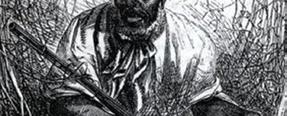
DIRECTOR’S REPORT
Look into how the museum is having a very good year with new exhibits, events, and special presentations.
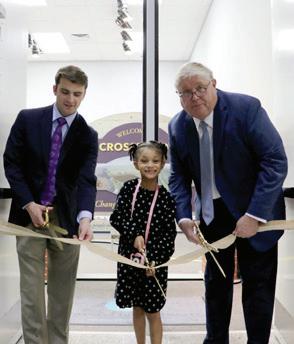
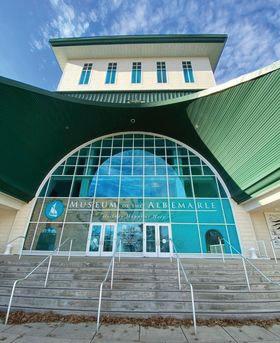
05
REDEEMED CHECK MARKED INSUFFICIENT FUNDS!
America defaults on its promissory note to her citizens of color.
08
TARHEELS IN THE VALLEY
OF HUMILITY
Look into how North Carolinians got our nickname.
10 FREEDOM
IN THE HARSHEST

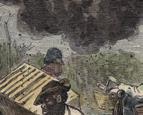
OF PLACES
The Great Dismal Swamp is a foreboding environment full of dangers, but it was once a refuge for many seeking to escape the horrifying institution of slavery.
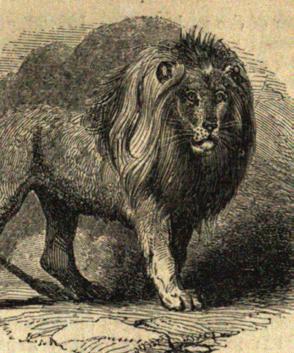
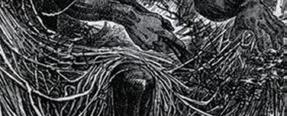

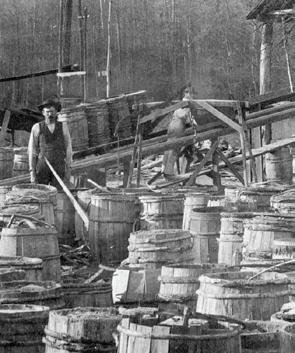
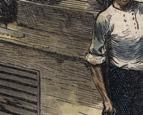
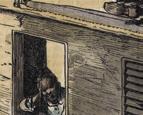
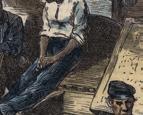
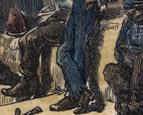

11 ADOPT-AN-ARTIFACT PROGRAM

Thanking many community members joining together behind a common cause.
12 HARRY ANDREWS
From the days of competitive Moth boat racing, learn of one of its legendary champions.
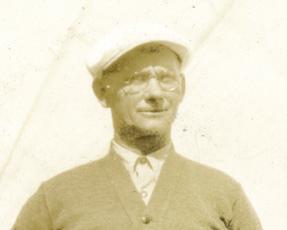
13
GEARING UP FOR SUMMER
Exciting things are coming your way in museum programming.
14 ROOTLE ROADSTER TOUR
PBS comes to the Museum of the Albemarle.
15 WHAT’S
HAPPENING AT AFFILIATE MUSEUMS
Exciting things are happening at our sister museums, see what’s in store.
19 DOUBLE DOSE OF THE NOAHS
Meet our new staff.
20 PRESIDENT’S REPORT
Our new FOMOA President shares his reflection on museum happenings.
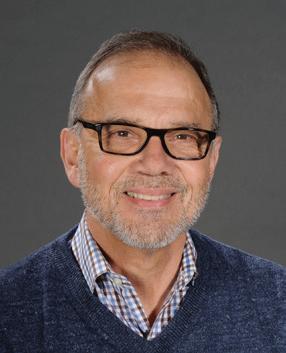
21 MEMBERSHIP
Thank you for all your support.
23 SPONSOR RECOGNITION
Thank you to our community support.
The Gateway
Amber D. Revels, Copy Editor
Andrew Nelson-Redondo, Exhibit/Graphic Designer
Contributors
Noah Edwards, Johny Hallow, Earl Ijames, Noah Janis, Wanda Lassiter, Lori Meads, Andrew Nelson-Redondo, Wayne Mathews, Don Pendergraft, Rebecca Stiles, Paul Vincent
The Gateway is published two times per year by the Friends of the Museum of the Albemarle. Published articles do not necessarily represent the views of the Department of Natural and Cultural Resources or any other state agency. Unless noted otherwise, images used are courtesy the Museum of the Albemarle.
© 2023 by the Museum of the Albemarle
For information on making a contribution to the Friends of the Museum of the Albemarle or to sponsor an issue of The Gateway, call 252-335-1453.
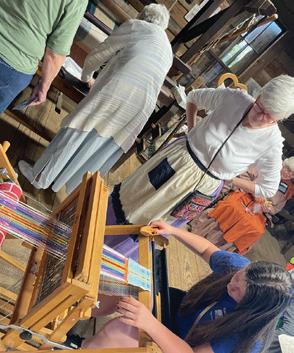
3
We’re looking forward to warmer weather with the greening and growing seasons of the Albemarle region. The museum, with your support through the Friend of the Museum of the Albemarle (FOMOA), has a full schedule of fun and enlightenment for your pleasure, sometimes referred to as Edu-tainment!
The museum is having a very good year with new exhibits, events, and special presentations. I’d like to thank you for helping us make history and culture in the museum
A Message from the Director
a great attraction, bringing visitors to the Albemarle region. Heritage tourists and visitors are seeking peaceful natural environments and landscapes of rivers, sounds, swamps, small towns, and the many crops seen in the fields. We hear that many visitors have a feeling of time travel.
We will be part of an event for children, PBS Kids with the Rootle Road Tour, a free family event during the North Carolina Potato Festival. These dates are Saturday and Sunday, May 20–21. We have community partners to provide demonstrations and fun for the whole family. There will be games and activities throughout the museum and on the front lawn. This is brought to you by PBS North Carolina and the Division of Child Development and Early Education of the NC Department of Health and Human Services. Please make plans to join us for a great time.
This is the Year of the Trail, an initiative through the North Carolina Department of Natural and Cultural Resources. We will dedicate a marker in front of the museum for the
Moonshine and Motorsports Trail on Friday, May 26, 10 a.m. This will be the furthest east and, depending on your travel direction, either the beginning or the end of a statewide series of historic markers associated with making, distributing, and running moonshine, white lightning, hooch, stump-juice, or your name of choice according to your heritage. This summer, the museum will have several fun days for children’s programs, and during the hot days, a cool movie in the auditorium for your viewing pleasure. We are aware of the need to walk through a quiet gallery of authentic artifacts. Families need to take time to discuss their past experiences, reflect, and reconnect in a real-time face-to-face discussion of changes and past responses to even greater challenges. The museum is happy to welcome you!

Please stay tuned to local print and social media for further details. We use various media platforms to promote the museum, you can find us on Facebook as Museum of the Albemarle, twitter@moaecity, Instagram@ moaelizcity, and on YouTube@Museum of the Albemarle.
Please let us know if we can help you with any history-related questions. I hope you’ll make plans to visit us, see you in the museum.
See you in the museum, Don
Pendergraft, Director
of Regional Museums

e Gateway
EAST LAKE RAID, STILLS ON SHIP, ca. 1923
See this image in the upcoming Moonshine and Motorsports Trail.
4 Director's Report
D Victor Meekins Papers, Courtesy of Outer Banks History Center
“Redeemed Check”

Marked Insufficient Funds!
 By Earl L. Ijames, Curator, North Carolina Museum of History, Raleigh
By Earl L. Ijames, Curator, North Carolina Museum of History, Raleigh

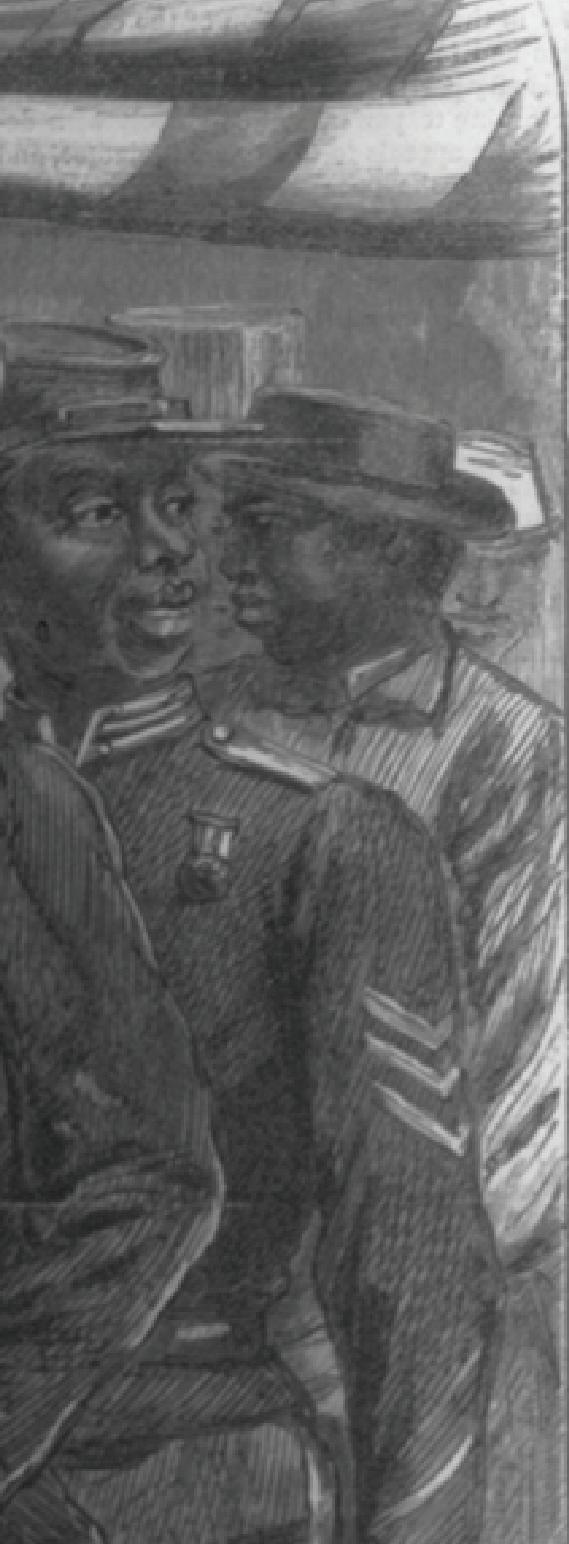
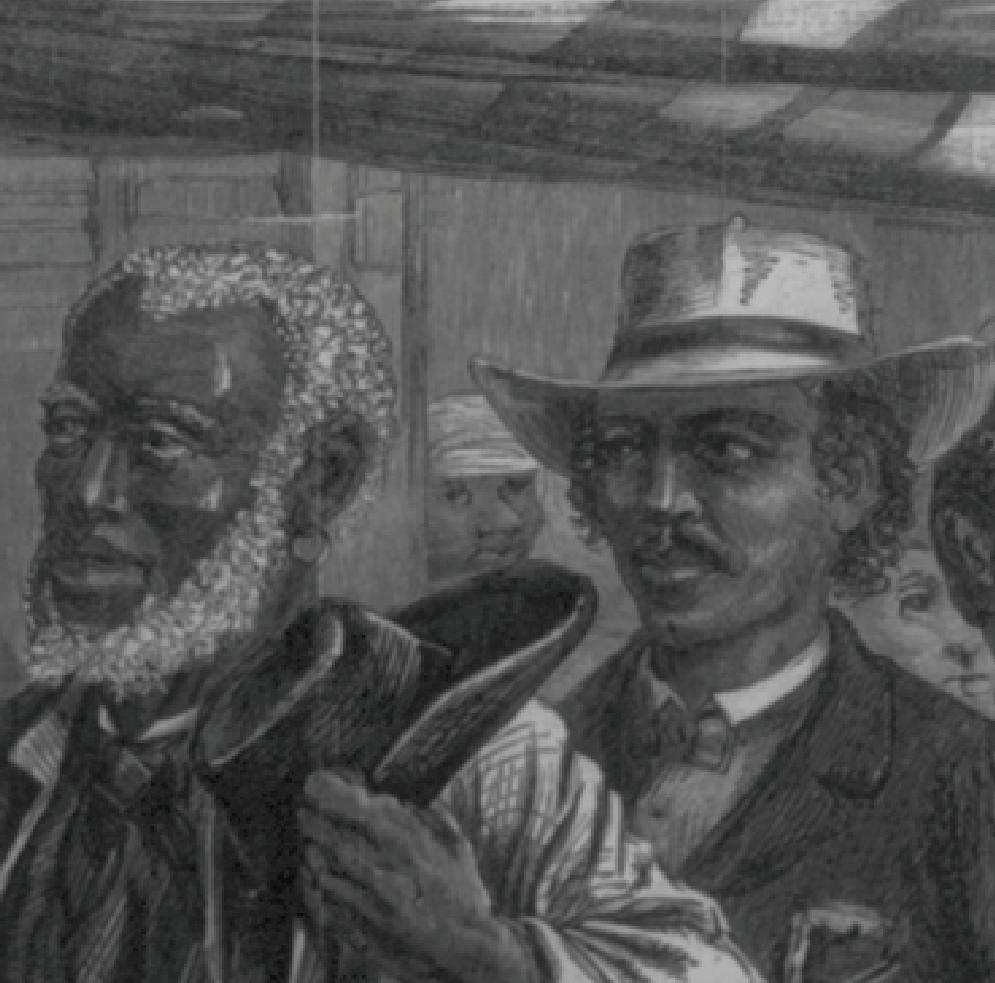
In August 1963, Dr. Martin Luther King Jr. delivered the “I Have a Dream” speech on the steps of the Washington Monument to a crowd of nearly a quarter million spectators on the National Mall. There, King declared a full century after President Abraham Lincoln’s 1863 Emancipation Proclamation that “America has defaulted on this promissory note insofar as her citizens of color are concerned. Instead of honoring this sacred obligation, America has given the Negro people a bad check, a check which has come back marked ʻinsufficient funds.ʼ”
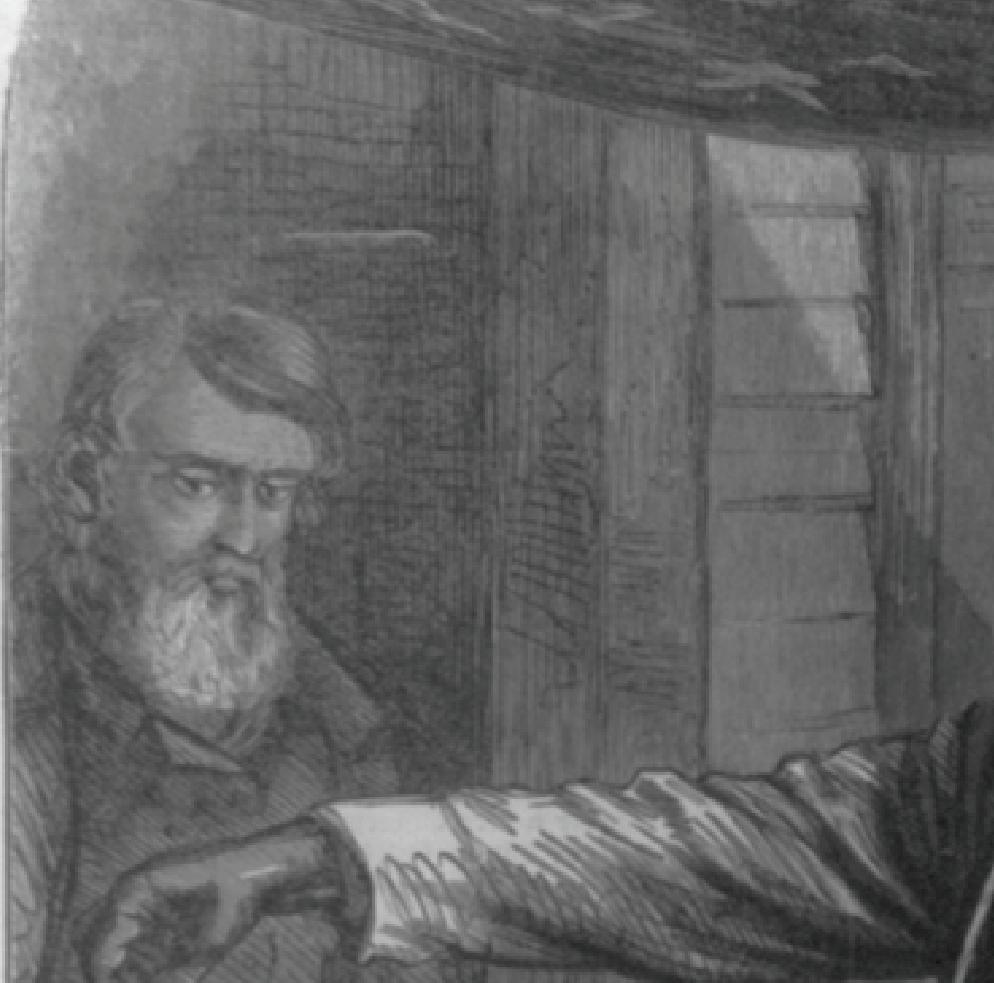
Feature
FREEDMEN VOTING IN NOVEMBER 1867 Note the United States Colored Troop veteran third in line. Courtesy Harper’s Weekly 5
History
After the Civil War (1861–1865), the 13th Amendment to the US Constitution outlawed slavery in the United States and its territories. North Carolina ratified the 13th Amendment on December 4, 1865. Two days later, neighboring Georgia ratified the amendment, resulting in three-quarters of the states approving it, thus freeing all Americans from the scourge of slavery.
In January 1868, Congress adopted the 14th Amendment, guaranteeing citizenship to native-born Americans , making the 400,000 African Americans in North Carolina and 4.5 million freedmen throughout the south American citizens. This was a radical move because enslaved African Americans had counted as threefifths of a person toward the population count. The laws and customs in American society generally treated people of color with “no rights that a White man was bound to respect” (North Carolina Supreme Court, 1828)
In February 1870, Congress adopted the 15th Amendment, the last of the three Reconstruction Amendments. The 15th Amendment granting the right to vote to African Americans was probably the most contentious of these amendments. People of color comprised majority populations in large swaths, spanning from southeastern Virginia into eastern North Carolina through the entirety of South Carolina, westward to the Mississippi delta. In the heart of this “Black Belt” lies the state of Alabama.
This amendment frightened and angered many who opposed legal equality. In the midst of adopting the Reconstruction Amendments, terrorist groups like the Ku Klux Klan (KKK) emerged and intimidated countless voters (see quote, center).
By the 1890s, the KKK had expanded to include a paramilitary group called the Red Shirts. This group not only opposed African American voting but violently discouraged “Progressive” Whites and Blacks from voting for their economic and social interests. The short-lived biracial voting coalition called the Populist Movement was crushed in 1898 in Wilmington by the only coup d’état in American history. The duly elected bi-racial government of North Carolina’s largest city resigned at gunpoint while the Red Shirts marauded through the Port City, murdering innocent citizens with Gatling guns.
By 1901 North Carolina and other southern states adopted segregation and discrimination as public policy—- effectively nullifying the Reconstruction Amendments. By the 1960s, Montgomery, Alabama, had become ground zero for the struggle for equality. Beginning with the 1955 Montgomery Bus Boycott, King had become the spokesman for tens of millions of African Americans “tired of waiting.” In what would become one of the nation’s seminal moments, Dr. King points out in his 1965 “Selma to Montgomery ” speech (see quote, right).
e Gateway
Quote from Dr. Martin Luther King Jr.’s 1965 speech, Selma to Montgomery
History 6
Lyrics from the song Ku Klux Klan by Steel Pulse, 1983
In April 1960, King, was invited to Raleigh, by Shaw University to form a non-violent organization that would be led by youth, mainly students. Shaw alumna Ella Baker and Troy State University student John Lewis organized the Student Non-Violence Coordinating Committee (SNCC) at Shaw that month. SNCC would become the front-line soldiers for American liberty.
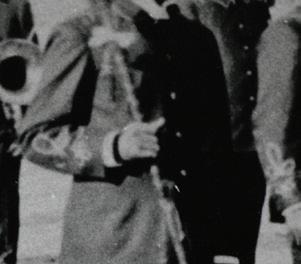
In February 1965, Jimmy Lee Jackson, a citizen of color in Dallas County, Alabama, was killed by state police while daring to register to vote. Jackson’s murder was the last straw in a century-long tyranny of African American voter





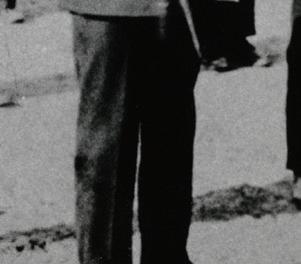
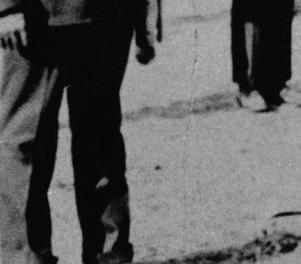
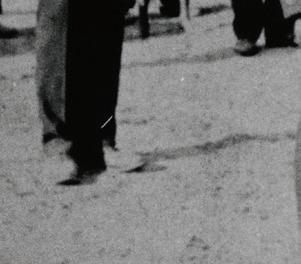


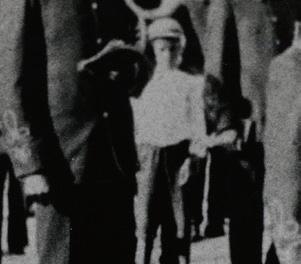
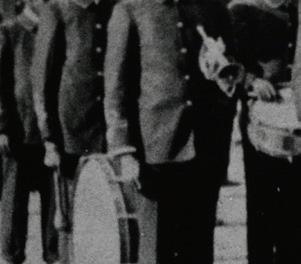

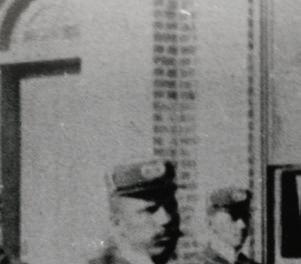
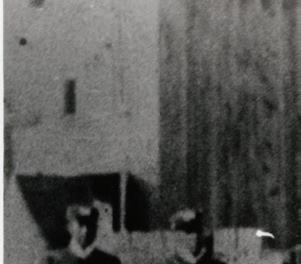
THE SEGREGATED ELIZABETH CITY, NC HOOK AND LADDER COMPANY, ca. 1900
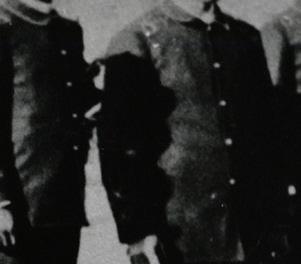


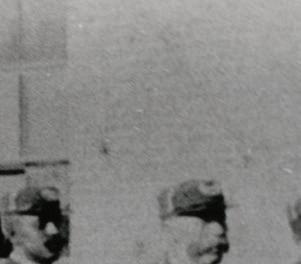
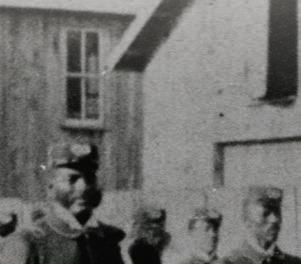
The segregated Elizabeth City Hook and Ladder Company was formed in 1891 to fight fires and rescue and demolish compromised buildings with their famous “hook.” The 1890s represented the apex of African American accomplishments after the Civil War. Elizabeth City did not integrate its fire and rescue services until 1977. Courtesy State Archives of North Carolina
suppression. The following month, locals were joined by other students, like Lewis, to plan a march 54 miles from Selma to Montgomery demanding voting rights. The marchers were met by state troopers and brutalized in what became known as “Bloody Sunday.”






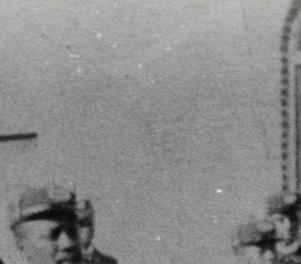
King and the Southern Christian Leadership Conference (SCLC) joined the protest for the ballot. With the eyes of the nation on them and with the support of President Lyndon B. Johnson and the Alabama National Guard, a third march successfully reached the Alabama capital. At the conclusion of the last march, Dr. King declared, “The Civil Rights Act of 1964 gave Negroes some part of their rightful dignity, but without the vote, it was dignity without strength.”
We can only wonder how much better North Carolina and the American civilization would be if Reconstruction, or the full and fair integration of everyone into society, had succeeded. Instead of American Pie, everyone has been eating Jim Crow and its leftovers.
To learn more, please visit our exhibition, Freedom! A Promise Disrupted: North Carolina, 1862–1901.







This traveling exhibit, on loan from the North Carolina Museum of History, depicts the struggle that newly freed African Americans faced to maintain their freedom in the post–Civil War and Reconstruction eras of North Carolina.











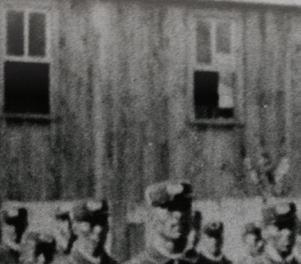
History 7
Tar Heels Tar Heels Feature

in the Valley of Humility
TYPICAL HOMESTEAD DURING THE SETTLEMENT OF NORTH CAROLINA
Courtesy Museum of the Albemarle


COMPILATION OF THE TAR INDUSTRY (RIGHT)

A newspaper engraving of men harvesting sap from a longleaf pine forest to produce turpentine and tar. In the middle; the Great Seal of North Carolina which symbolizes; Liberty on the left, modeled after the Greek God, Athena. She is holding the Constitution and a pole with cap representing freedom from bondage, the woman, next to the cornucopia represents plenty, abundance and resources and a ship in the distance represents commerce. Below in Latin, Esse quam Verdi translates as “To be rather than to seem.” The dates shown are from the Revolutionary War, top is the Mecklenburg Declaration and bottom is the Halifax Resolves. On the right is a photograph of a tar and naval products packing operation, circa 1890. Courtesy Museum of the Albemarle

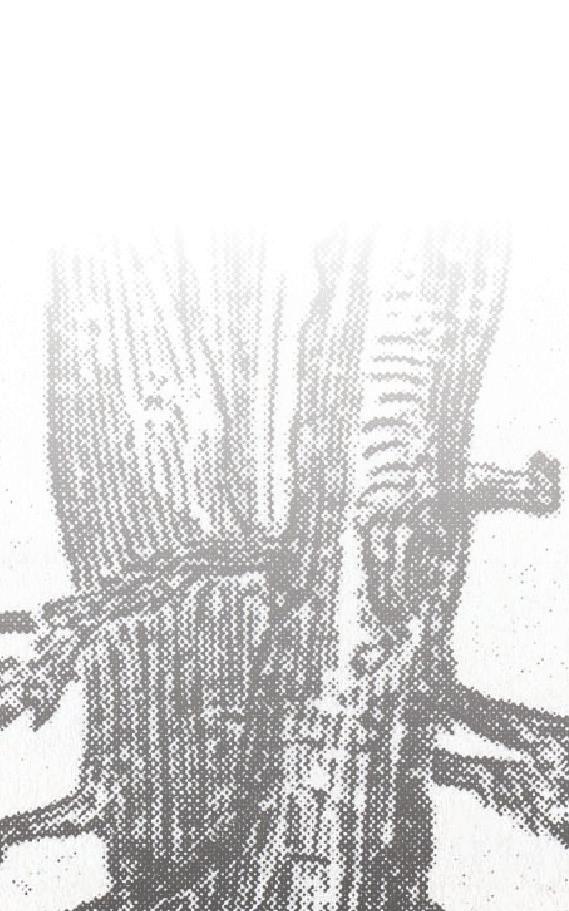
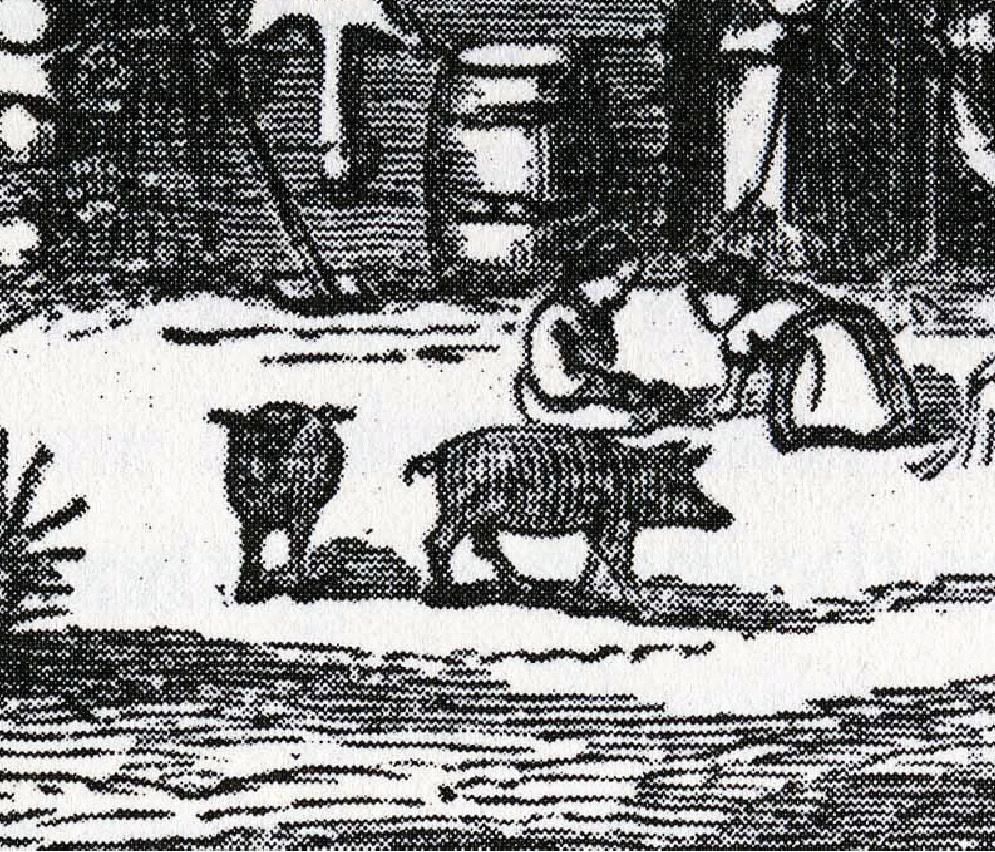


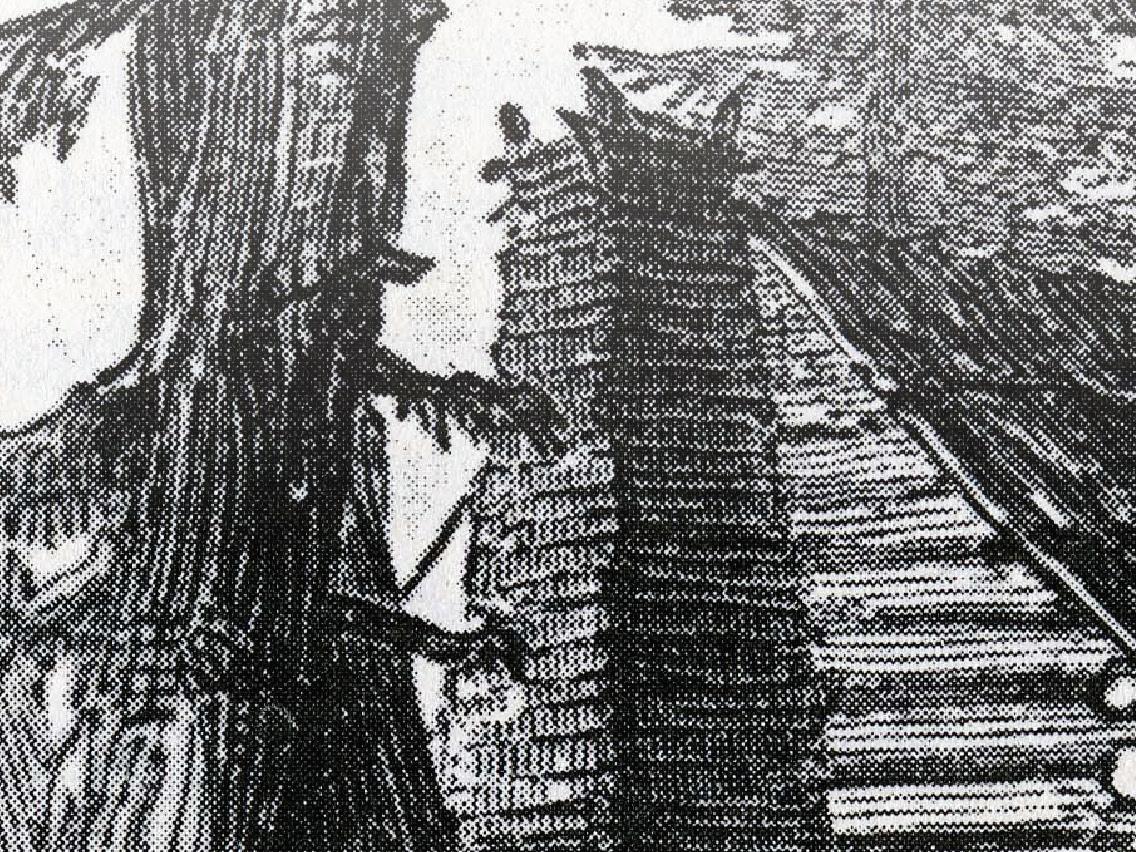
e Gateway
History 8
By Don Pendergraft, Director of Regional Museums
Apopular joke by historians refers to North Carolina as “the valley of humility between two mountains of conceit.” The comparison dates to the beginnings of the state. The dividing lines were drawn separating Virginia, North Carolina, and South Carolina after the British government took control in 1728 of land originally given to the eight Lord Proprietors in 1663. The Virginia and South Carolina colonies contained deep water ports, Norfolk, and Charleston, which promoted transatlantic trade and prosperity. North Carolina’s coast, known as the Graveyard of the Atlantic, was treacherous with barrier islands, shallow sounds, and shifting shoals preventing ease of access to deep draft vessels. North Carolina did not have navigable rivers to provide access to trade to the piedmont and mountains. Life in what was called the “Rip Van Winkle state” was slower and not as profitable or prestigious as its wealthy neighbors to the north and south. British Parliament proclaimed the state had resources in naval stores and
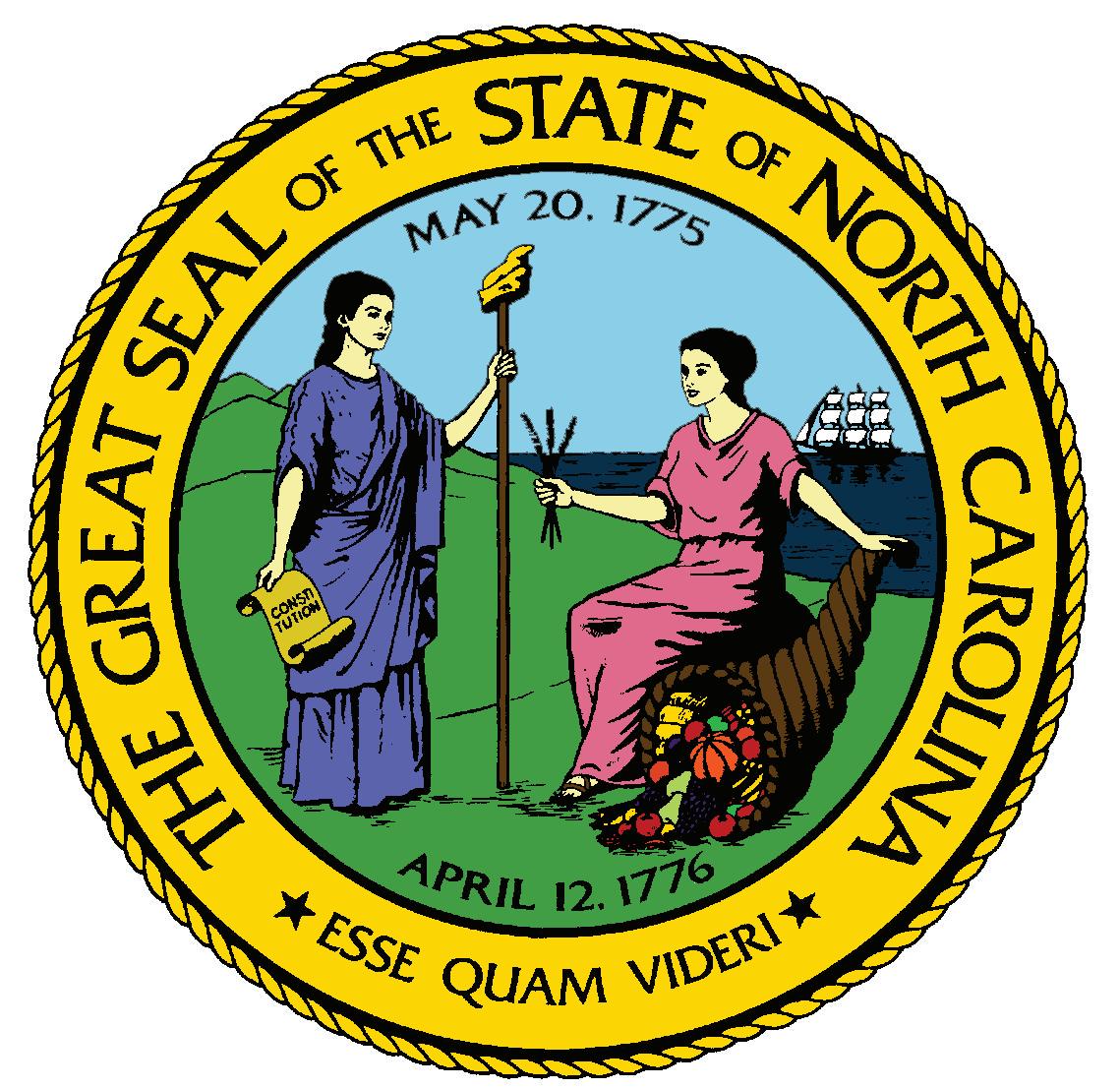
timber for ships but figured it was inconsequential. Even early residents were called a derogatory name, Tar Heels, due to many being barefoot and the messy work around tar kilns to produce pitch and tar from longleaf pine forests prevalent throughout the state.
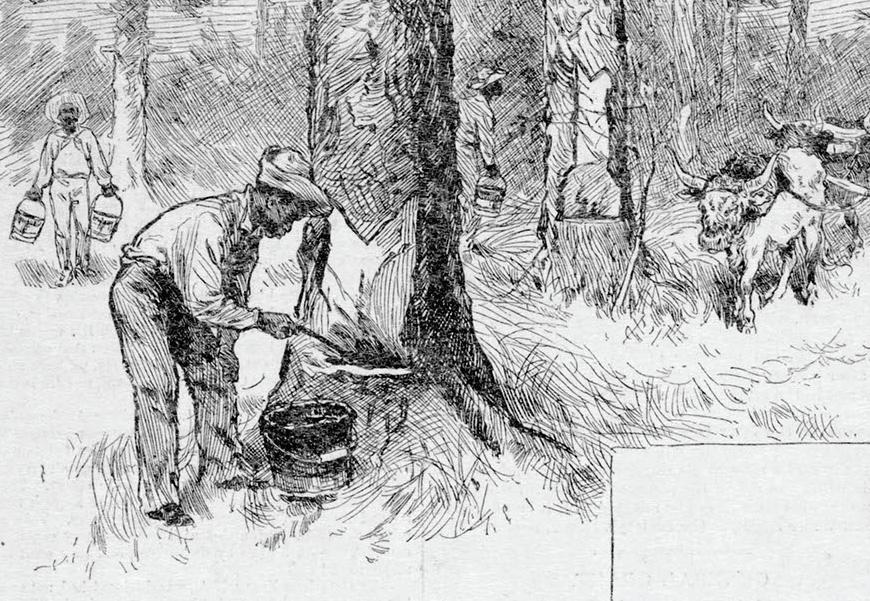
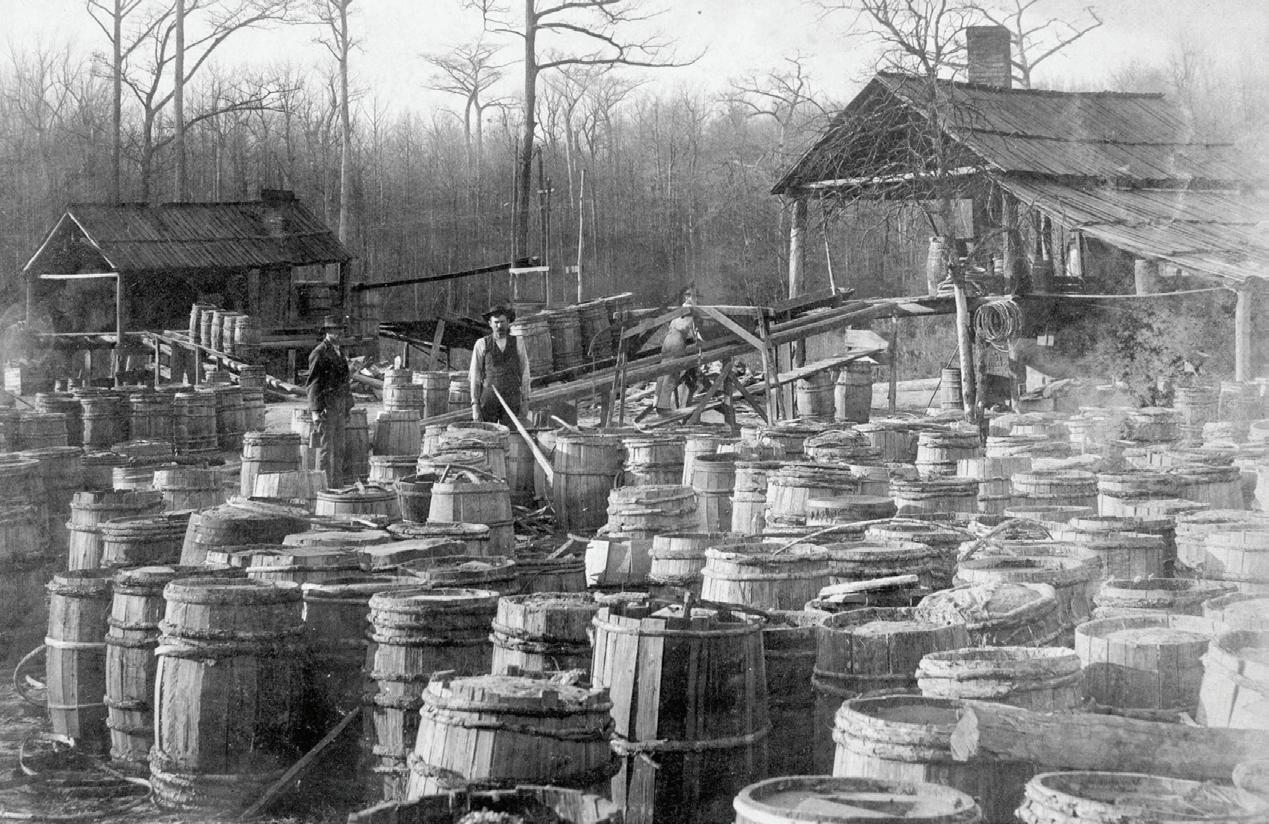
Those who came to live in North Carolina migrated from Virginia and South Carolina. They were in search of rich farmland and a haven from religious persecution. The Society of Friends, known as Quakers, and French Huguenots crossed the Atlantic into Virginia and slipped through the Dismal Swamp into the river country of northeastern North Carolina. Enslaved and indentured people made the journey seeking freedom from former owners, the Church of England, and control by the British colonial government. Many came to North Carolina for control of their destinies. The ideas that the early people formed in the remoteness and isolation of the state produced a resilient spirit, self-reliant, strong, and willing to sacrifice for our shared future.
The people eventually overcame the early obstacles and made the state a work in progress—a strong and friendly place. As the official state toast says, “here’s to the land of the long leaf pine, a summer place where the sun doth shine, where the weak grow strong and the strong grow great, here’s to down home the Old North State.” We are, as the state’s motto describes, people who are engaged with communities, the environment, education, and commerce. Forward-thinking people, who have chosen “to be, rather than to seem.”
We invite you to come and visit the museum and become involved as members. Join us as we continue to preserve the past as we promote the future.
History 9 museumofthealbemarle.com
Freedom in the Harshest of Places
By Noah Edwards, Collections Assistant
The Great Dismal Swamp is a foreboding environment full of dangers, but it was once a refuge for many seeking to escape the horrifying institution of slavery.
Early in the colonial era, the swamp became a refuge for debtors, criminals, religious dissidents, indentured servants, and enslaved individuals. As slavery expanded, the Great Dismal became a greater sanctuary for the self-emancipated. The swamp was a well-known haven for individuals avoiding capture since pursuers often only entered at their own peril. Low estimates of the swamp’s population are in the thousands making it possibly the largest maroon community in North America.
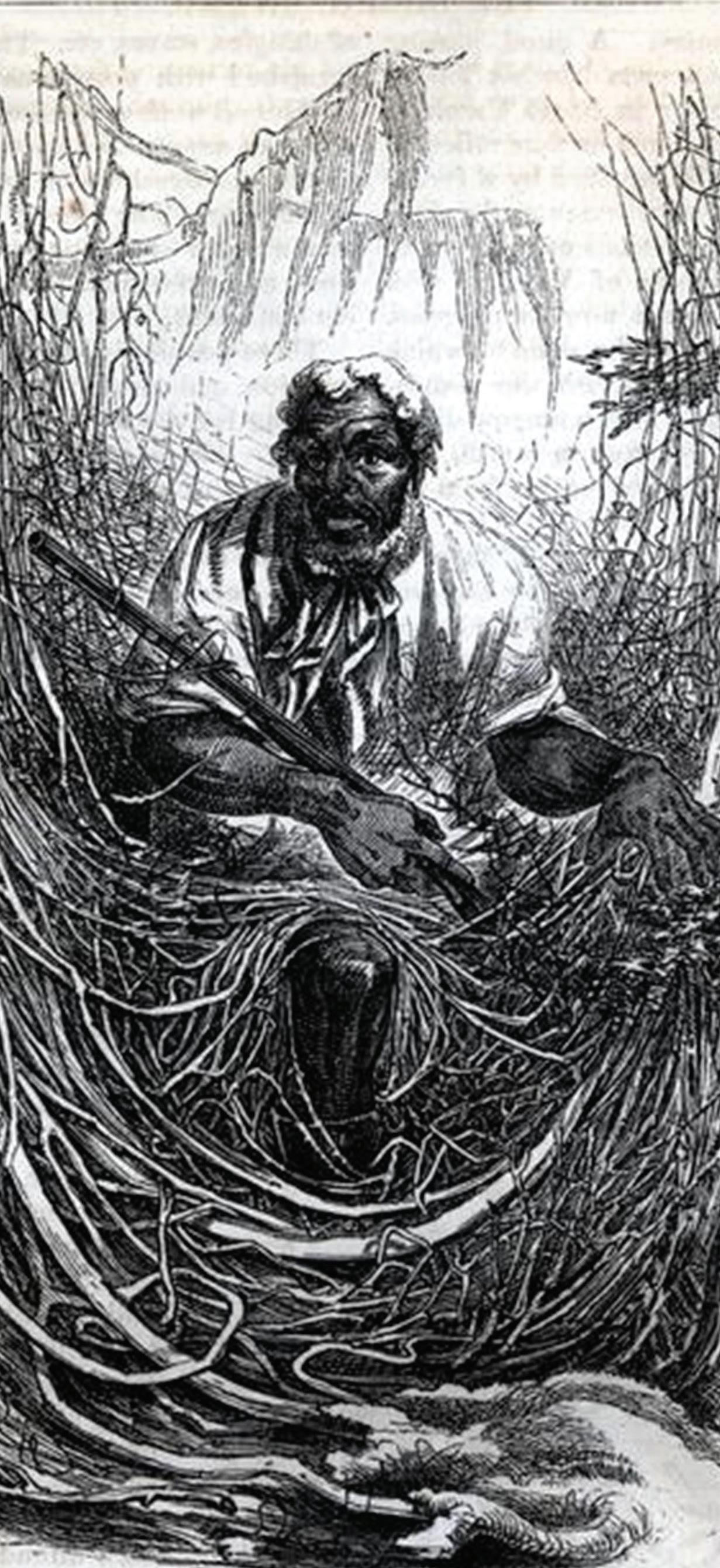
The Great Dismal Swamp was not simply a stop for people continuing on the Underground Railroad, the archaeological record reveals. Archaeologists have found evidence of houses and agriculture, showing that for many who entered the swamp, it was more than a temporary refuge. The Great Dismal Swamp provided the opportunity to establish homes and families, raise crops and livestock, and live with a measure of freedom.
To learn more about how people continued to strive for freedom following the end of slavery, visit the exhibit, Freedom! A Promise Disrupted: North Carolina, 1862–1901 at the Museum of the Albemarle.
e Gateway
Feature
DEPICTION OF MAROON LEADER, OSMAN, 1856
10
David Hunter Strother’s 1856 depiction of maroon leader, Osman, for Harper’s New Monthly Magazine. Courtesy the Library Company of Philadelphia
Exhibitions
Conservation: Adopt-an-Artifact program
 By Carrie Barker, Collections Specialist
By Carrie Barker, Collections Specialist
This year, many community members bonded together behind a common cause: the conservation of the Pool portrait, a recent acquisition with significant local ties. The oil painting of young Gaston Pool (b. 1851-d. 1852), who is buried beside his mother Narcissa Sawyer Pool in the Christ Episcopal Church Cemetery behind the museum, inspired many to donate funds to hire professional conservators to clean, stabilize, and correct damage to the painting and its frame.
All of us at Museum of the Albemarle are grateful for the generosity of our community.
Museum of the Albemarle’s Adopt-an-Artifact program has successfully raised money for specialized care of our artifacts for many years. Recently added to the program—since the success of the Pool portrait campaign!—is an 1859 edition of A Dictionary of the Holy Bible, which belonged to Margaret A. Brooks, wife of George Brooks, an anti-secessionist throughout the Civil War.
 A DICTIONARY OF THE HOLY BIBLE, 1859
Owned by Mrs. Margaret A. Brooks and needs conservation. The damaged spine of the book needs repair.
A DICTIONARY OF THE HOLY BIBLE, 1859
Owned by Mrs. Margaret A. Brooks and needs conservation. The damaged spine of the book needs repair.
11 Conservation
Courtesy Museum of the Albemarle
Harry Andrews
 By Paul Vincent, Contributing Researcher
By Paul Vincent, Contributing Researcher

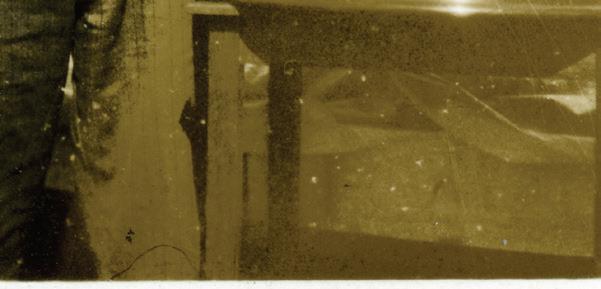



During the early days of competitive Moth boat racing, it was not uncommon for sailors to design and fabricate their own entries. An intricate knowledge of constructing such a sleek and nimble craft was part and parcel of becoming a truly great contender. Chief among those legendary Moth champions was Captain Harry “Pop” Andrews.


Born in Little Egg Harbor Township in 1879, Andrews grew up around the rich industrial maritime trades that were hallmarks of his New Jersey environs. His aptitude for boatbuilding, as well as sailmaking, led Andrews to work for the

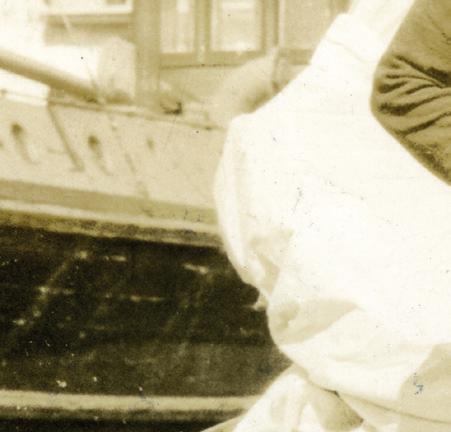
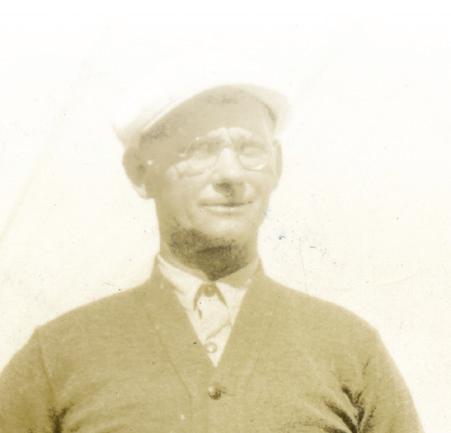
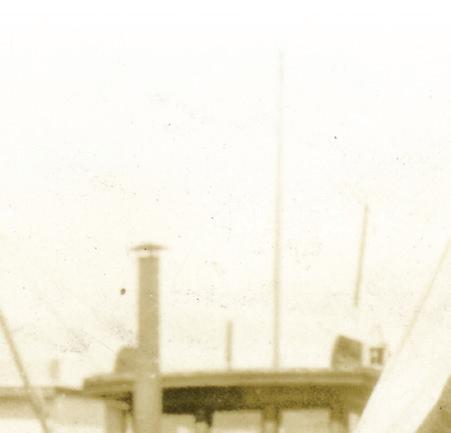
South Jersey Yacht Building Company around 1910. This Atlantic City-based outfit secured contracts for all types of vessels, from whaleboats for the US Navy to topof-the-line luxury yachts.
Andrews lent his ingenuity and skill to crafting Elizabeth City’s beloved racing dinghy, the Moth boat, starting in the early 1930s. He became one of the earliest originators of the class after Joel Van Sant’s initial design quickly grew in popularity with sailors the world over. Andrews’s own designs coupled with his flair for being an accomplished sailor led the seasoned mariner to three world champion-

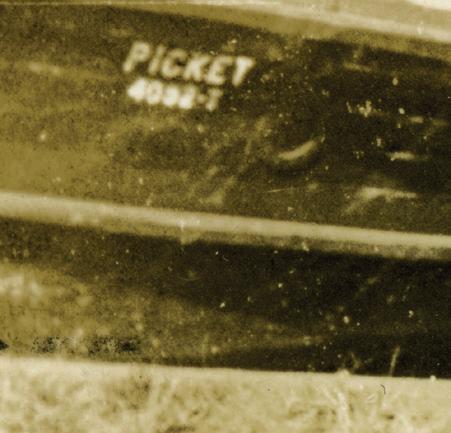

ship titles in 1933, 1937, and 1938.
Relocating to Elizabeth City in 1939, Andrews began work at the Sanders Shipyard with his longtime friend and contemporary Van Sant. There the veteran captain and champion sailor continued his maritime vocation as a construction foreman, overseeing completion of the new Navy subchasers being built for the war effort. It was during this time Andrews tragically died, aged 62, from injuries sustained during a fall in 1941. He was laid to rest in Atlantic City Cemetery; a Moth boat marks his tombstone.

e Gateway
CAPTAIN HARRY “POP” ANDREWS WITH THE ANTONIA TROPHY AND HIS ENTRY LEO (RIGHT).
12 Biography Profile
Andrews won the first Moth World Championship at the first annual National Moth Boat Regatta, held in Elizabeth City, in October 1933. Courtesy Museum of the Albemarle
Education & Programming
MARK YOUR CALENDERS!
Gearing Up for Summer
By Lori Meads, Education Curator
Education is gearing up for the summer, and we are excited to be a stop on
. The tour will provide families with children, birth to age eight, with free playful learning experiences within their community. The event will feature hands-on activities, PBS KIDS education resources, and demonstrations by community partners. Activities and takeaways are aligned with literacy, physical, sensory, social-emotional, and STEM curricula. On Friday, May 19, from 4 p.m. until 7 p.m., there will be an evening for the families of exceptional children. On Saturday, May 20, from 10 a.m. until 4 p.m. and Sunday, May 21, from 10 a.m. until 1 p.m., the tour is open to all. This program is made possible through the Preschool Development Grant B-5 from the North Carolina Department of Health and Human Services.
The Education Department will kick summer off with a on Thursday, June 15, from 10 a.m. until 2 p.m. Teens, ages 13–17, can learn and gain experience through working with the public while learning to help the museum with programs and behindthe-scenes assistance. The workshop is free, but preregistration is required.
We invite the public and summer camps to join in on two scheduled Summer Fun Days. The first program is scheduled for Wednesday, June 21, from 10 a.m. until 2 p.m. with the theme Day on the River.
Guests can explore the maritime heritage, both historical and natural, of the Albemarle Region. Topics include the Outer Banks Center for Wildlife Education, Dismal Swamp State Park, Somerset Place State Historic Site, Pettigrew State Park, and hands-on activities. On Wednesday, July 12, 10 a.m.–2 p.m., get your groove on for a
Come dressed in your best 1970s clothing, and participate in fun activities by playing 1970s games and hands-on activities.
Two days of movies are planned with the first showing on Thursday, July 20, at 10 a.m. and 1 p.m. of . Before each showing of the movie, visit with the US Fish and Wildlife Service to learn a few facts about the difference between alligators and crocodiles. A hands-on activity will be available. The museum will take you back to 1996 on Thursday, August 10, with the showing at 10 a.m. and 1 p.m. Don’t miss the soaring adventure of a 13-year-old girl and her estranged father, who learn what family is all bout when they adopt an orphaned flock of geese and teach the birds to fly.
We are looking forward to all that we have planned and the visitors that we will see this summer!
PBS NORTH CAROLINA’S ROOTLE ROADSTER TOUR
DOCENT WORKSHOP SUMMER FUN DAY: DAY ON THE RIVER SUMMER FUN DAY: GROOVY 1970S FUN DAY MOVIE AT THE MUSEUM: LYLE, LYLE, CROCODILE MOVIE AT THE MUSEUM: FLY AWAY HOME
JUNIOR
13
Rootle Roadster Tour



Makes Stop at Museum of the Albemarle!
By Lori Meads, Education Curator

The Museum of the Albemarle is looking forward to the North Carolina Potato Festival weekend when PBS North Carolina’s Rootle Roadster Tour will make a stop in Elizabeth City. The tour will open on Friday, May 19, from 4–7 p.m., focusing on families with exceptional children. On Saturday, May 20, from 10 a.m. to 4 p.m. and Sunday, May 21, 10 a.m.–1 p.m., the tour will be open for all families to enjoy all that it has to offer while visiting downtown Elizabeth City.
The Rootle Roadster Tour provides families with young children, birth to age eight, with free playful learning experiences, PBS KIDS education resources, and demonstrations by community partners. The activities and takeaways are aligned with literacy, physical, sensory, social-emotional, and STEM curricula. This is a free family event.

The tour is made possible through the Preschool Development Grant B-5 from the North Carolina Department of Health and Human Services and PBS North Carolina.



Albemarle Alliance for Children and Families and other community partners will be present, providing information on local resources.


Rootle Roadster Tour, NC Department of Health and Human Services, Albemarle Alliance for Children and Families, and the Museum of the Albemarle are planning for everyone that attends, rain or shine, to have a Rootle-Rif-Fic Time while learning and discovering what the community has to offer for young children, birth to age eight.

e Gateway
Education & Programming 14
Signs of the Times
What’s Happening with Affiliate Museums
For a full listing of upcoming programs and events, visit ncmuseumofhistory.org/events.
Longleaf Film Festival

Friday, May 12–Saturday, May 13, 2023
Join Longleaf Film Festival’s community of filmmakers and film fans with an in-person weekend of screenings of movies that demonstrate a Tar Heel State connection, through the people involved in making them, their filming location, or their subject. Watch dozens of films— narrative and documentary features and shorts, animated films, music videos, spoken-word productions, and more. Plus, enjoy workshops, socials, and Movies-N-Moonlight, where we screen films on a giant blow-up screen! Longleaf Film Festival, a free-to-attend juried event, highlights the best of independent film in a place that strives to tell the stories that connect us all.
Open through Friday, March 31, 2023
Signs of the Times is an exhibition about the history of protest in North Carolina— about the people who protest, the wide array of issues they debate, and the way they shape society. The artifacts and images illustrate how protests occur over time, the many forms and expressions they take, and the lasting legacies of these movements. This exhibit explores how people have used protests to raise questions of racial and social justice, civic duties, civil rights, and environmental activism across various communities throughout North Carolina.
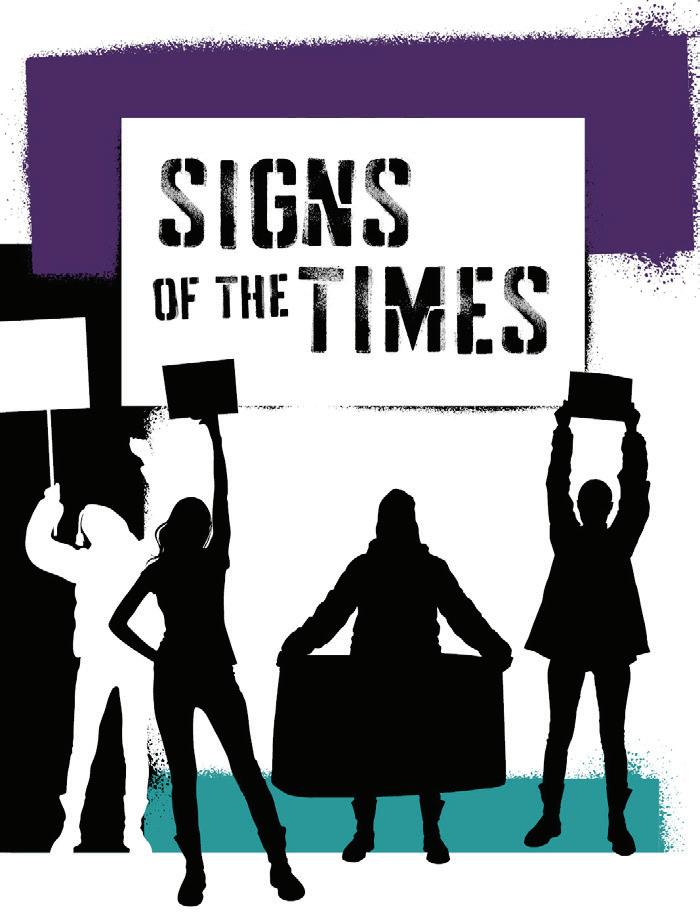
The festival is sponsored, in part, by Carlyle Adams Foundation, the-freelance-editor.com, Empire Properties, and Ricci Law Firm P.A.
History and Highballs: Missing History: Jewish Life in Western North Carolina
Thursday, May 18, 2023, 7 p.m. via Zoom
Speaker: Sharon Fahrer, Historian, Author, and Co-Founder of History@Hand
Jews in Appalachia? Who knew? Little has been documented about the Jewish history of western North Carolina, yet clues are all around us. Jews could be found in many towns, including Brevard, Hendersonville, Statesville, Asheville, Rosman, Boone, Blowing Rock, Franklin, Sylva, Little Switzerland, Valle Crucis, Marion, Canton, Bryson City, Robbinsville, and Waynesville. Why did they come? How did they get here? What did they do in these mountains? What remains? Join us for the answers to some of these questions.
Sharon Fahrer moved to Asheville in 1996 partly because of its rich history and architecture. People drawn to Ashe -
Education & Programming 15 museumofthealbemarle.com
Education & Programming
NC Museum of History, continued
ville often reinvent themselves. Sharon is a recovered environmental planner turned history geek armed with a BA in geography from Clark University and a master’s of urban planning from Wayne State University. She began to document Asheville’s Jewish history with Jan Schochet in 2003 to capture the memories of people who knew Asheville’s downtown in its prime and to better understand her adopted home. History@Hand has grown to offer walking tours and provide interpretive panels for buildings and outside exhibits. To date, she has authored over 40 panels on a wide array of topics, including Black and Montford history, as well as important sites and people of local history. Sharon has done extensive work enhancing an archive on Jewish Life in western North Carolina at the D. Hiden Ramsey Library Special Collections at the University of North Carolina at Asheville. She chaired the 37th annual meeting of the Southern Jewish Historical Society in Asheville and currently serves on the board of Jewish Heritage NC, as well as on the research committee of the Community Remembrance Project. Jan Schochet and Sharon co-wrote two books: The Family Store: A History of Jewish Businesses in Asheville, North Carolina 1880–1990 and The Man Who Lived on Main Street: Stories by and about Sol Schulman. Sharon also wrote A Home in Shalom’ville: A History of Asheville’s Jewish Community.
Super Summer Passport— Art + History + Science
June–August 2023
Take a trip this summer with your North Carolina museums!
Explore and connect with these family-friendly activities.
To start, download your Passport—or get one at one of these state museums:
NC Museum of Art
NC Museum of History
NC Museum of Natural Science
Then visit one of the museums and complete its Passport activity, and get your Passport stamped. Voyage to all three museums to earn a North Carolina Traveler patch!
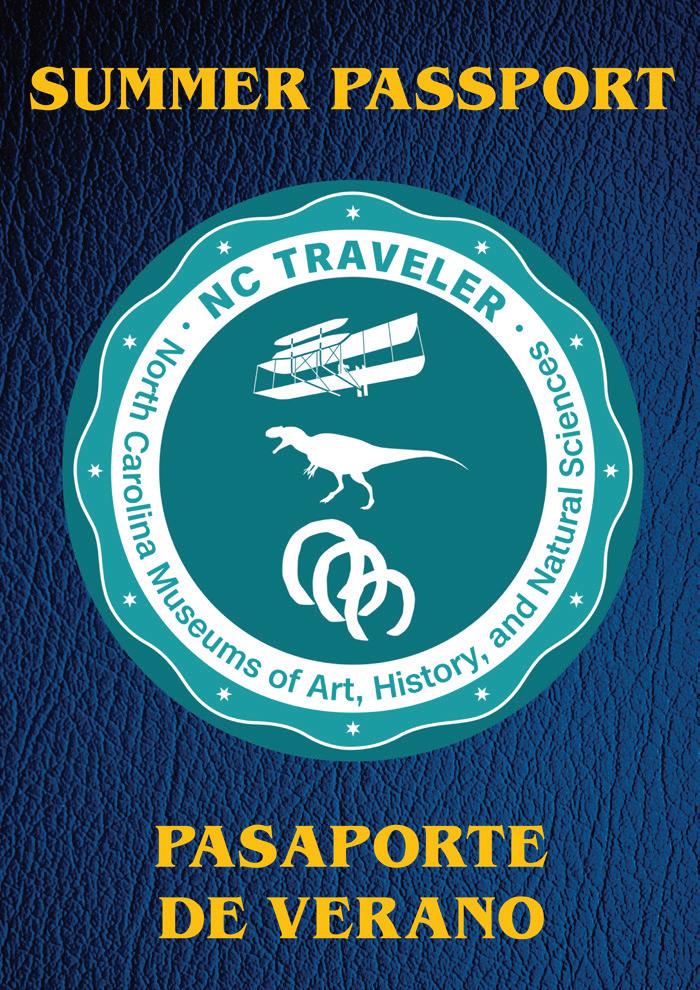
Furniture: Crafting a North Carolina Legacy
Opens Saturday, July 1, 2023
The Tar Heel State’s rapid success in early furniture manufacturing propelled North Carolina to become the leader in furniture production in the South and fifth in the nation by 1925. This exhibit explores the shift from “farm” to factory and its impact on NC’s economy. Historic and contemporary furniture will be featured, along with photography of factories, workers, and advertisements. A variety of media and hands-on interactives will enhance the visitor’s experience.
IT’S EASY TO GET YOUR PASSPORT
1. Open camera or QR code reader on your phone
2. Point your camera at the QR code
3. Tap “Open Link” to access our website
The Gateway Spring/Summer 2023 - Vol. 46
16
Education & Programming
The Story of BBQ in N.C.
June – August 2023
From the Division of Education and Outreach in the NC Department of Natural and Cultural Resources. This display, consisting of pop-up exhibit panels, offers a look at the history and culture of BBQ in North Carolina.
other food vendors will be on-hand from 11:30 a.m.–2 p.m. Musicians will perform in the backyard of the 1897 Poe House. This event is free of charge.
Annual Summer Kids Camps
June 26-30 and July 25-29
History-to-Go Boxes
First Tuesdays
For more information about events and exhibits at the Museum of the Cape Fear Historical Complex, visit museumofthecapefear.ncdcr.gov
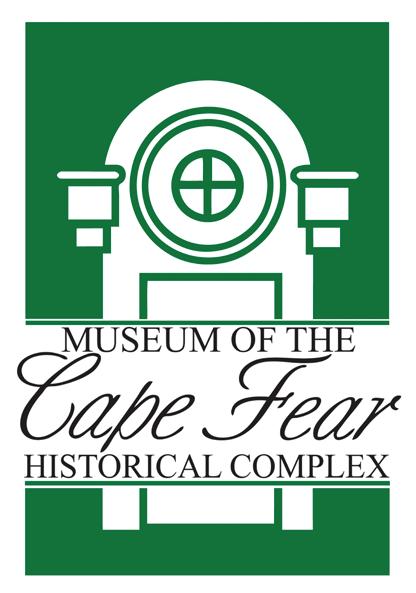
For more information about events and exhibits at the Mountain Gateway Museum, visit mgmnc.org
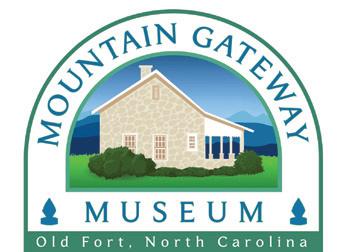
2023 Pioneer Day
Saturday, April 29, from 10 a.m. to 4 p.m.
To help celebrate the town of Old Fort’s 150th anniversary, the Mountain Gateway Museum and Heritage Center (MGM) is cranking up the fun at its 2023 Pioneer Day with more music, crafts, food, inflatables, and family activities than ever!
The free festival, now in its 37th year, is set for Satur-
BBQ Bash at the Museum of the Cape Fear
June 24, 10 a.m. – 4 p.m.
Join us for a fun-filled family day. At 10:30 a.m., John Shelton Reed, BBQ historian and coauthor of Holy Smoke: The Big Book of North Carolina Barbeque , will speak. A BBQ food truck and
day, April 29, from 10 a.m. to 4 p.m., at the museum, 24 Water St., Old Fort. McDowell Trails Association will host its Old Fort Rock ’nʻ Roller road cycling event downtown that same day.
A Peek Into the Past: Old Fort at 150
MGM’s exhibition A Peek into the Past: Old Fort at 150 will continue the sesquicentennial festivities. Showcasing the people, businesses, and organizations that have forged the town’s history, it will run through Dec. 31, with a new round of photographs starting in July.
McDowell County Arts Council’s outdoor mini-drama
July 1 and 8 at 2 p.m.
Another celebratory event is McDowell Arts Council Association’s (MACA) outdoor mini drama about early settlers’
Funded by the Cumberland Community Foundation. Please visit the museum’s website and social media pages for more information as it becomes available.
Each month, the museum offers free take-home activity boxes for children. A new theme is offered on the first Tuesday of each month, and boxes are available as long as supplies last. Past themes have included the American Revolution, toys and games, North Carolina State symbols, the Underground Railroad, and pirates. This program is funded by the Arts Council of Fayetteville/Cumberland County and the Museum of the Cape Fear Historical Complex Foundation.
experiences. The local Dream
On theater group will perform the one-act play on the porch of MGM’s historic Stepp Cabin on July 1 and 8 at 2 p.m.
Trails and Trains Festival
Saturday, June 3
With 2023 being North Carolina’s Year of the Trail, Old Fort will host its first Trails and Trains Festival on Saturday, June 3. Part of this event will take place on MGM’s grounds. Come prepared to learn about railroad history, participate in guided hikes and mountain bike races, and more.
Old-Fashioned Ice Cream Social
Just before Old Fort’s 4th of July parade, the Mountain Gateway Museum will host its annual Old-Fashioned Ice Cream Social, featuring free ice cream and watermelon and a live bluegrass band.
Annual Bike Races: Off-Road Assault on Mount Mitchell and the Jerdon Mountain Challenge, by Blue Ridge Adventures
July 22-23
And on July 22–23, MGM again will be the start and finish point for Blue Ridge Adventures’ large, annual bike races—the Off-Road Assault on Mount Mitchell (ORAMM) and the Jerdon Mountain Challenge. That’s the same weekend as the Friends of the Mountain Gateway Museum’s Summer Yard Sale. Come and enjoy!
17
Education & Programming
JULY 4TH, 2022
A couple of youths consider which toppings to add to their free ice cream scoops during the Mountain Gateway Museum’s 2022 Fourth of July Ice Cream Social in Old Fort. The annual event, which also features free watermelon slices and live bluegrass music, is traditionally held on the museum’s grounds from 2 to 4 p.m., when the town’s patriotic parade begins.

Courtesy of the Mountain Gateway Museum
2022 PIONEER DAY
A new weaver learns the ropes at Mountain Gateway Museum’s 2022 Pioneer Day Festival in Old Fort. This year’s festival will help celebrate the Town of Old Fort’s 150th anniversary. The free event will be held on Saturday, April 29, from 10 a.m. to 4 p.m.

Courtesy Mountain Gateway Museum
AERIAL VIEW OF OLD FORT

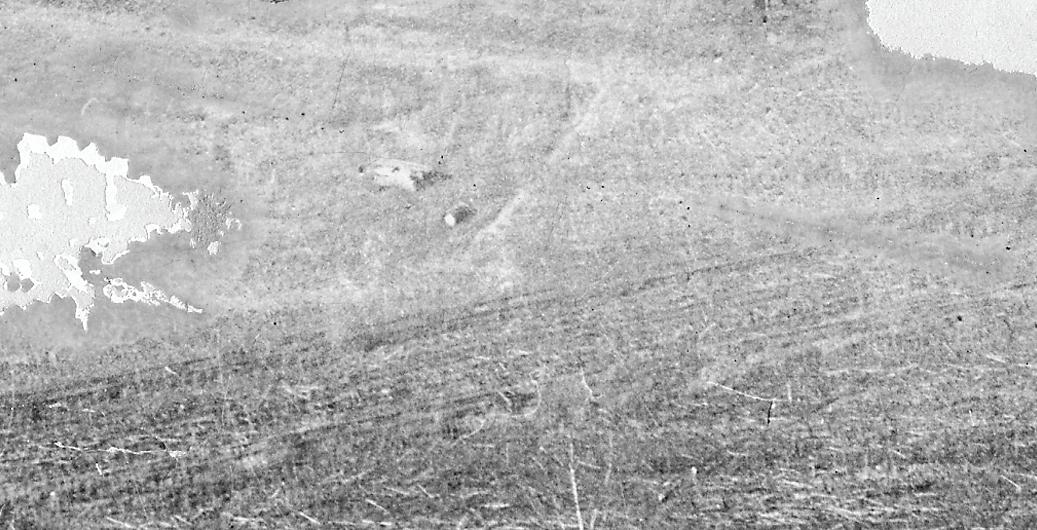

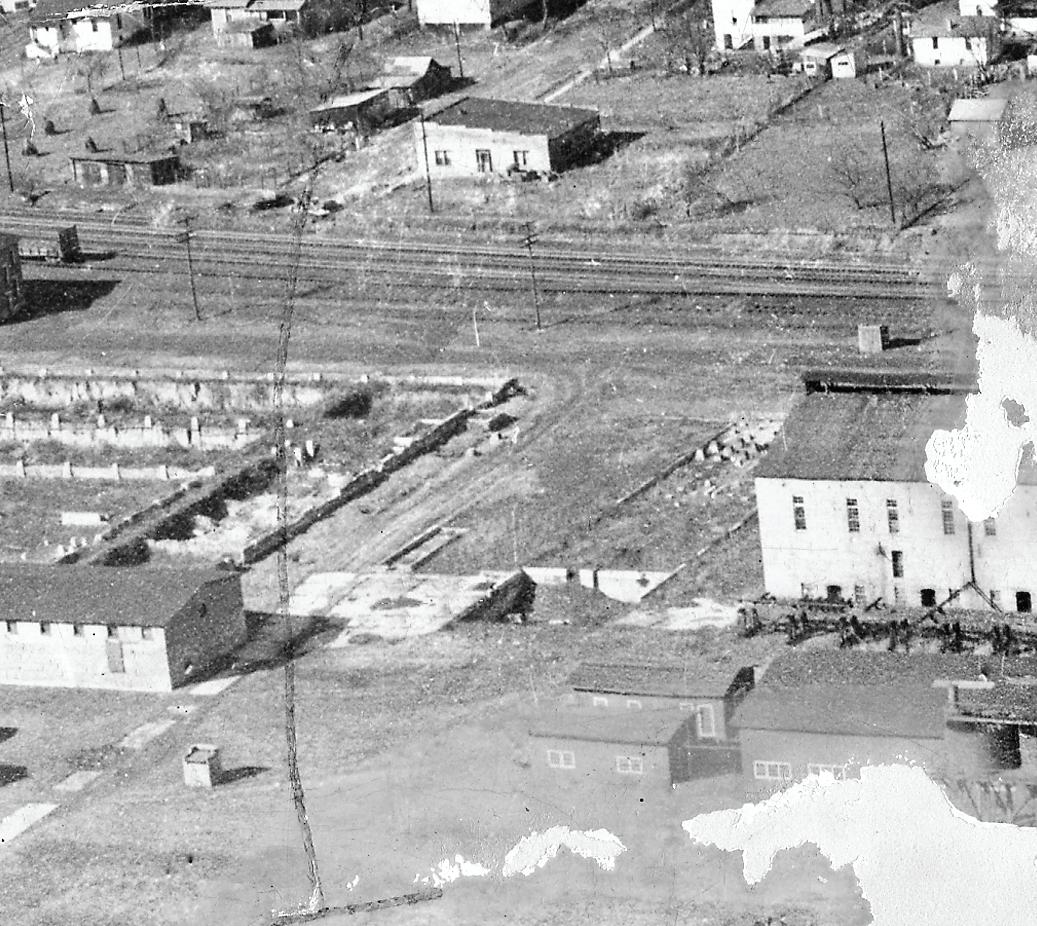
This circa 1933 view of the town of Old Fort looks north from the Union Tanning Co. after a disastrous fire there put hundreds of local people out of work. The disaster was so economically significant, the news ticker in New York City’s Times Square announced it. This image and 57 more are part of a photography exhibit at the Mountain Gateway Museum that celebrates Old Fort’s 150th anniversary this year. The free exhibit will run through Dec. 31.

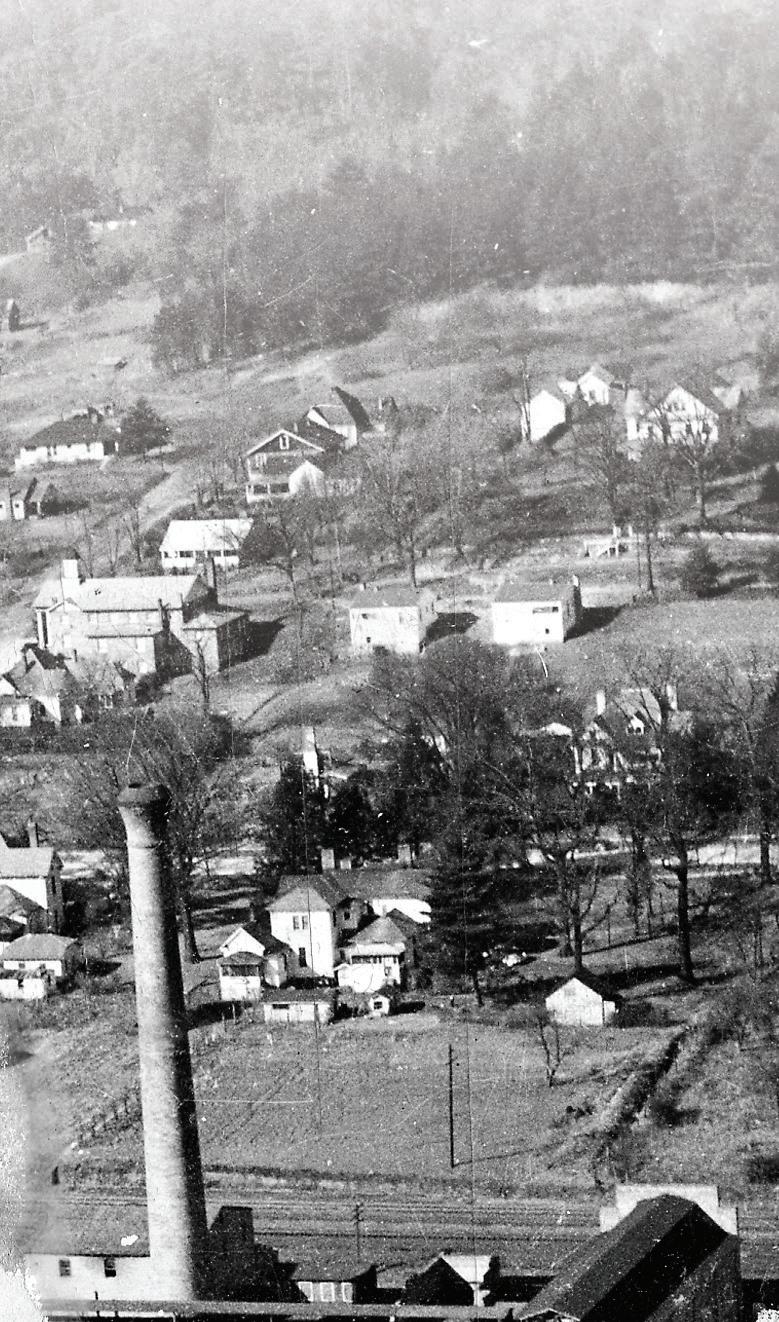

Courtesy Mountain Gateway Museum
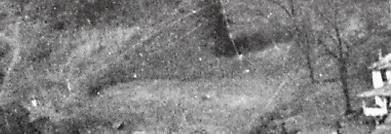
e Gateway
18
MEET OUR NOAHS
Double Dose of the Noahs
 By Barbara Putnam, Operations Manager
By Barbara Putnam, Operations Manager
TThe Noahs joined our team! Noah Edwards came on board as our new artifact collections assistant, and Noah Janis began as our new museum educator. Noah Edwards graduated from East Carolina University in 2021 with a degree in anthropology. He continues to tutor at the College of the Albemarle and has worked as an archaeological field technician for Commonwealth Heritage Group, Inc. Noah Janis graduated from the University of North Carolina at Chapel Hill in 2017 with a bachelor of arts in history. Before coming to the Museum of the Albemarle, he worked as a historical interpreter at Somerset Place State Historic Site for more than four years.

Staff Updates 19
On the left, we introduce Noah Edwards as our new artifact collections assistant, joining Wanda Lassiter and Carrie Barker as the third member of the Collections department. On the right, we introduce Noah Janis as our new museum educator working under Lori Meads in the Education department. We couldn’t have asked for a better bundle! Courtesy Museum of the Albemarle
President’s Report
By Johny Hallow, FOMOA Board President
After serving as a board member of the Friends of the Museum of the Albemarle (FOMOA) for one year, I was nominated to serve as the FOMOA Board President. I am thankful for the opportunity to serve this wonderful organization and community and look forward to a great year of working together.
We had a busy year in 2022 with the opening of two new exhibits. In January, we opened Guardians of the Land: Discovering Indigenous Americans, which tells the fascinating story of how land has played an important role for over 15,000 years in the living history of the Indigenous people of coastal northeastern North Carolina. In October, we opened Rock of the Eye, which presents the rich boatbuilding history in North Caro -
lina that has shaped the Albemarle region into a diverse maritime haven by bringing people together. We had a wonderful evening celebrating the opening of the exhibit and were fortunate enough to be joined by Joan and Owen Maxwell of Regular Marine in Edenton.
This year, we have already had the opening of a new traveling exhibit, Crossroads: Changes in Rural America. This traveling exhibit explored how Americans have relied on rural crossroads for generations and how rural American communities changed in the 20th century.
We also will have the opening of several other new exhibits this year, along with several educational opportunities and other community activities. We encourage you to follow

our social media pages so that you can stay informed about upcoming events.
We are proud to announce that our membership has expanded to more than 400 members. We would love to see the membership continue to grow as we move forward.
Finally I would like to thank our staff as the operation of our museum would be impossible without their continuing hard work and dedication. I would like also to thank the current and past members of FOMOA, who continue to dedicate their time and resources to ensure that the museum reaches its maximum potential. We look forward to a great year together at the museum, and we are thankful for the community’s continuing support.
The Gateway Spring/Summer 2023 - Vol. 46
RIBBON CUTTING OF CROSSROADS: CHANGES IN RURAL AMERICA
(Left to Right) Johny Hallow, FOMOA President; Miss Grant; and Zane Hedgecock, Chief of Staff, North Carolina Department of Agriculture and Consumer Services. Courtesy Museum of the Albemarle
20 Membership
Membership
Membership Matters
September 1, 2022 – April 14, 2023
Thank you for supporting the museum!
RENEWALS
Individual
• Grafton Beaman
• Margie Berry
• Susan Blackmon
• Veronica Brentjens
• Earnell Brown
• Sharon Burtner
• David Clegg
• Margene Curtice
• Peggy Davenport
• Gary Dunstan
• Dianne Fletcher
• Wendy Flores
• W. Brian Forehand
• Mimi Galgano
• Rhonda Gregory
• Evelyn Henley
• MSG William “Sarge” Hoffman
• Betty Ingram
• JoAnn Jasinski
• Delsie Jones
• Tess Judge
• Joyce Lassiter
• Norma Laughmiller
• Daniel McAuliffe
• Arthur McPherson
• Mable Jean Moore
• David Seymour
• Marvyn Siders
• Barbara Snowden
• David Seymour
• Judy Stallings
• Elizabeth Taylor
• Phyllis Timmerman
• Verna Austin Wall
• Peggy West
• Eloise White
• Emily Jennings White
Family
• Bill & Carol Allen
• Ronnie & Donna Baker
• Bill & Chris Barber
• Pernell Bartlett
• Kim & Jack Baumbaugh
• Ron & Mary Black
• Dr. Glen Bowman
• Bernetta, Anthony & Elisa Brown
• Roy & Joan Daniels
• Phil Donahue
• Ed & Nancy Eadie
• Archer & Janet Farmer
• Brenda & Billy Felton
• Bobby & Barbara Fitchett
• Clay Foreman
• Mark & Frances Gass
• Norma Hatot-King
• Harriett & Tony Hornthal
• Carol Jennings
• Eddie & Cindy Jennings
• Penny Leary-Smith
• Joyce & Justina Long
• Bill McCrea
• Rod & Barbara Mueller
• Sean & Catherine Murray
• Jack & Sarah Neal
• Nancy & John Nicholls
• Holly Phelps
• Rebecca Phelps
• Beverly & Reggie Riddick
• Fred & Jan Riley
• Bill & Patricia Sterritt
• Charlotte Underwood
• Faye Ellen Weatherly
• Craig Winslow
Patron
• Gretchen Blacksmith
• Di Small & Neal Blinken
• Dewey & Pat Burgess
• Phyllis Bosomworth & Jim Watson
• Lee Culpepper
• Peter & Cynthia Erickson
• Sharon Greene
• Becky Harrell
• David & Jane Harris
• Chris & Monica Harty
• Doris Hawkins
• Linda Hofler
• Alden & Patty Hoggard
21 museumofthealbemarle.com
Membership
• Ken Howard
• Blair & George Jackson
• Sam & Janet Jones
• Mary Ann & Barry Keyes
• Don & Mary Lee Kosik
• Jeanie Lefler
• Sarah & John Pugh
• Joyce Reitz
• Julie & Harry Robinson
• Corrina & Chris Ruffieux
• Anne Sanders
• Bren O’Sullivan & Joe Inqui
• Barbara Snowden
• Ethen Sutton
• Turner Sutton
• Wayne & Dee Talley
• Lee & Judy Vassar
• Paul & Joyce Wheeler
Sponsor
• Al & Min DelGarbino
• Kurt & Bobbi Hunsberger
• Robert & Elana Muir
• Herb & Annette Small
Lifetime Members
• Hilton & Mary Leigh Barrett
• Arthur & Patti Bergman
• Anna & Bruce Biggs
• Karl Brandspigel & Nita Coleman
• Geoff & Penny Byrd
• George Converse
• Carol & Ed Cowell, Jr.
• Brenda & Terry Daniels
• Sam & Faye Davis
• Col. Bill & Susan Davis
• Oliver & Linda Etheridge
• Joe & Judy Evans
• Nancy Ferebee
• Jo Ann Foreman
• Creig & Karen Foreman
• Dr. Linda Fusco
• Doug & Diana Gardner
• Dorsey Harris
• Edwin & Diana D. Hardison
• Flint & Janet Harding, Jr.
• James & Jackie Hathaway
• Dr. Karen Ray & Dr. John Hill
• Chad Hull
• Russ & Courtney Hull
• Maughan & Kay Hull
• J. Wilson & Margaret Jones, Jr.
• Buddy & Beverly Madrin
• Dr. Charles & Brenda Mahaffey
• Mark & Lil Maland
• Cynthia & Joe Mastro
• Michael & Sherri McDaniel
• Ed & Claudia Merrell, Jr.
• Hunter Foreman Michael
• Nancy Bailey Muller
• Kirk & Anita Oldham
• Charlotte Patterson
• William Parker, Jr.
• Chris & Whitney Paullet
• Dr. Anne Marie Radke
• Tapp & Charlie Robinson
• Matt & Breanne Scribner
• Norman & Susan Scurria
• Beverly Small
• Mark & Stacy Small
• Dr. Benjamin Speller, Jr.
• Marvin Stokley
• George & Mary Thomas
• Jim & Jo Thomas
• Bob & Judy Thorne
• Mary Tirak
• Byrum Charitable Trust
• Barbara & Leo Wachter
• Katherine Wassink
• Jimmy & Mary Jo Westbrook
• Dian Williams
NEW MEMBERS
Individual
• Geraldine Langford
• Keith Phelps
• Jude Roberts
Family
• Mark & Alisa Eramo
• Joseph & Wanda Flythe
• Lyman & Susan Lawrence
• Arlinda Taylor
Patron
• Kim & Tim Brinn
The Gateway Spring/Summer 2023 - Vol. 46
22
Sponsor Recognition

The Museum of the Albemarle wishes to thank our sponsors and community partners. It is only through the generosity of businesses and individuals that the museum is able to continue to offer events that not only serve as fundraisers for the museum, but also allow the museum an opportunity to interpret a portion of our region’s history.
The Friends of the Museum of the Albemarle (FOMOA) is a non-profit support group that seeks to raise awareness and provide funding for exhibits, educational programming, and artifact conservation throughout the 13 county region that we serve. The Counties served are Bertie, Camden, Chowan, Currituck, Dare, Gates, Hertford, Hyde, Northampton, Pasquotank, Perquimans, Tyrrell, and Washington Counties. The Museum of the Albemarle is the recipient of all funds raised.
ELIZABETH CITY FOUNDATION

Special Event Rentals


Make history a part of your special event. Make your event ...an elegant affair. With a variety of spaces available for rent and an attractive and convenient downtown Elizabeth City location, the museum is an ideal choice for almost any event; including business meetings, corporate dinners, community events, performances, wedding receptions, holiday parties, and family reunions.
Reserve Today & Say I Do to History (252) 335-1453
m u seum of t h e albem a r l e friends ofthe Supporting Regional History
• Explore • Engage
• Explore • Engage 23
Experience
Experience
Experience • Explore • Engage
Museum Hours
Monday – Friday, 10 a.m. – 4 p.m.
Saturday, 10 a.m. – 4 p.m.
Museum Gift Shop
Monday – Friday, 10 a.m. – 4 p.m.

Saturday, 10 a.m. – 4 p.m.
Museum of the Albemarle
501 South Water Street, Elizabeth City, NC 27909
(252) 335-1453
MuseumOfTheAlbemarle.com
Facebook.com/MuseumOfTheAblemarle Twitter.com/moaecity Instagram.com/moaelizcity YouTube.com/c/museumofthealbemarle
From the Past Picture


MATHIAS FAMILY BICENTENNIAL FARM
This Currituck County bicentennial farm dates to 1780 and is a part of Century Farms of Northeastern North Carolina, a multimedia display of photographs of century and bicentennial farms of northeastern North Carolina. Courtesy Manly West MuseumOfTheAlbemarle.com Please recycle.
Nonpro t Organization US Postage PAID Elizabeth City, NC Permit No. 43
Free admission































 By Earl L. Ijames, Curator, North Carolina Museum of History, Raleigh
By Earl L. Ijames, Curator, North Carolina Museum of History, Raleigh

































































 By Carrie Barker, Collections Specialist
By Carrie Barker, Collections Specialist
 A DICTIONARY OF THE HOLY BIBLE, 1859
Owned by Mrs. Margaret A. Brooks and needs conservation. The damaged spine of the book needs repair.
A DICTIONARY OF THE HOLY BIBLE, 1859
Owned by Mrs. Margaret A. Brooks and needs conservation. The damaged spine of the book needs repair.
 By Paul Vincent, Contributing Researcher
By Paul Vincent, Contributing Researcher







































 By Barbara Putnam, Operations Manager
By Barbara Putnam, Operations Manager








